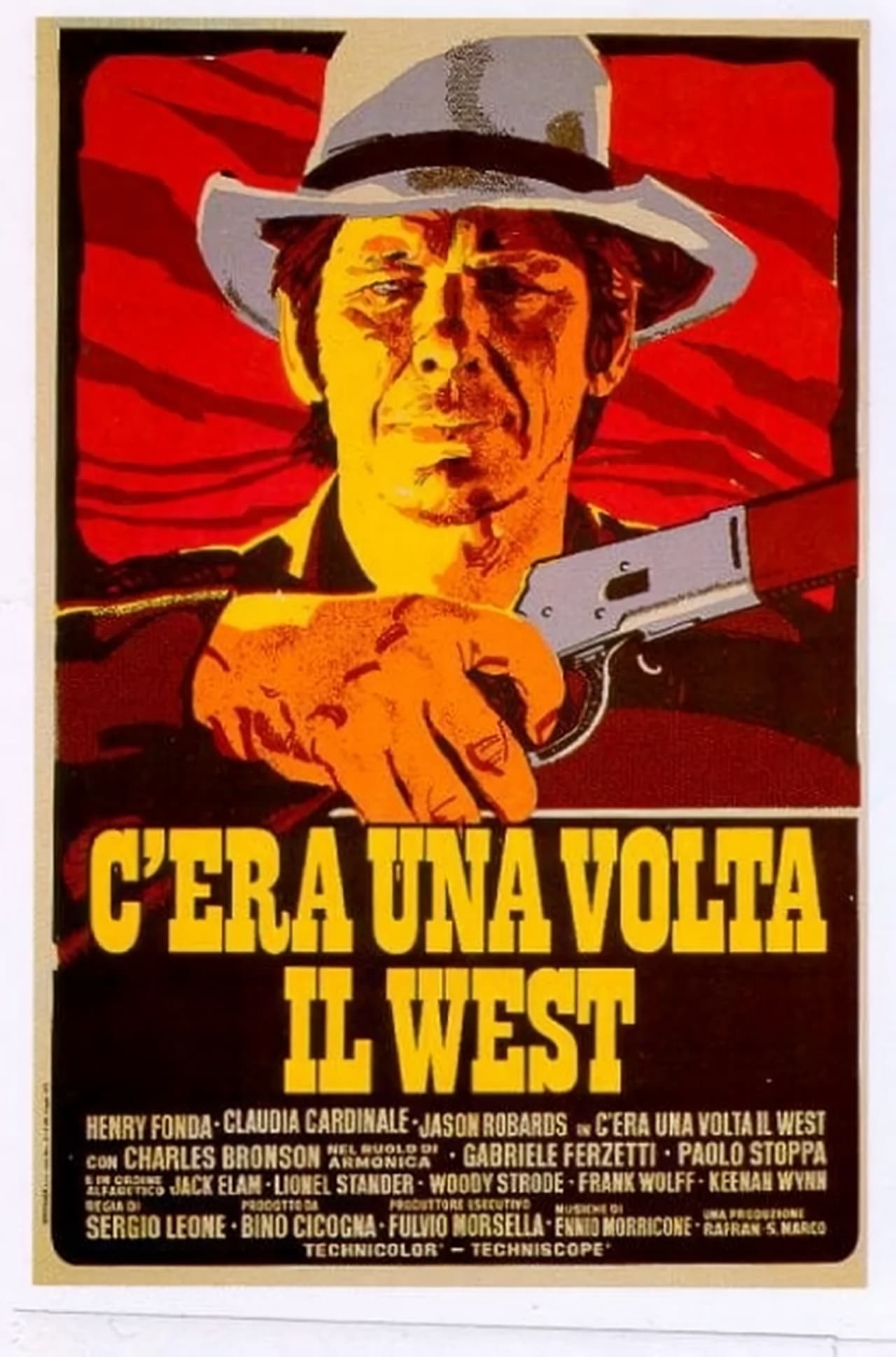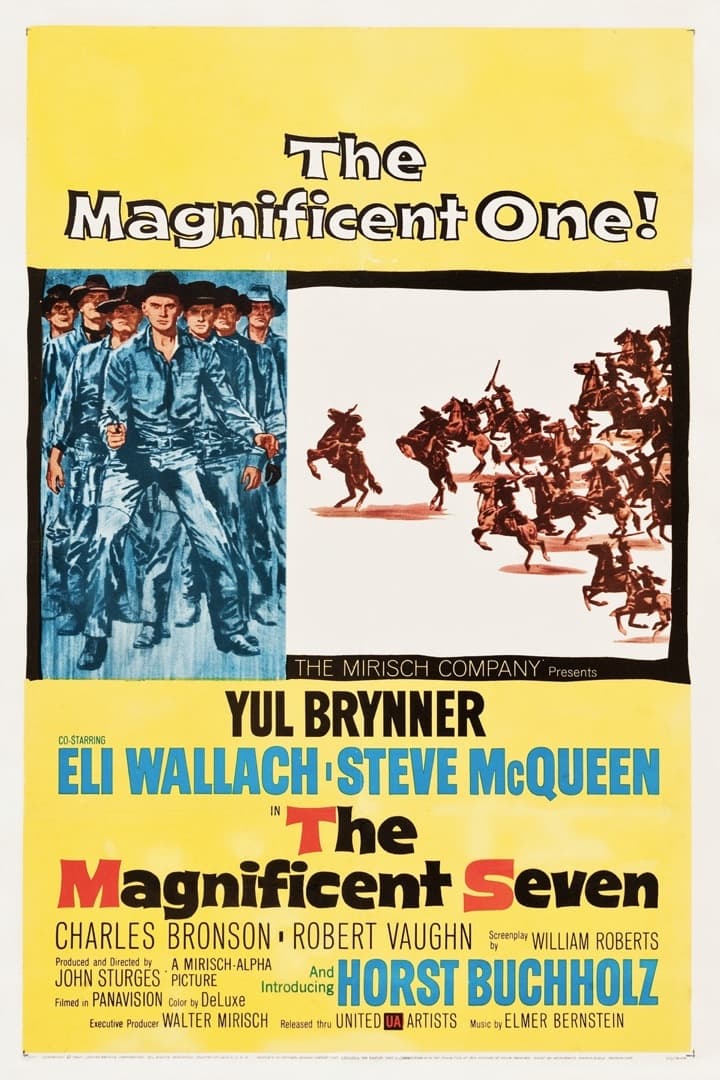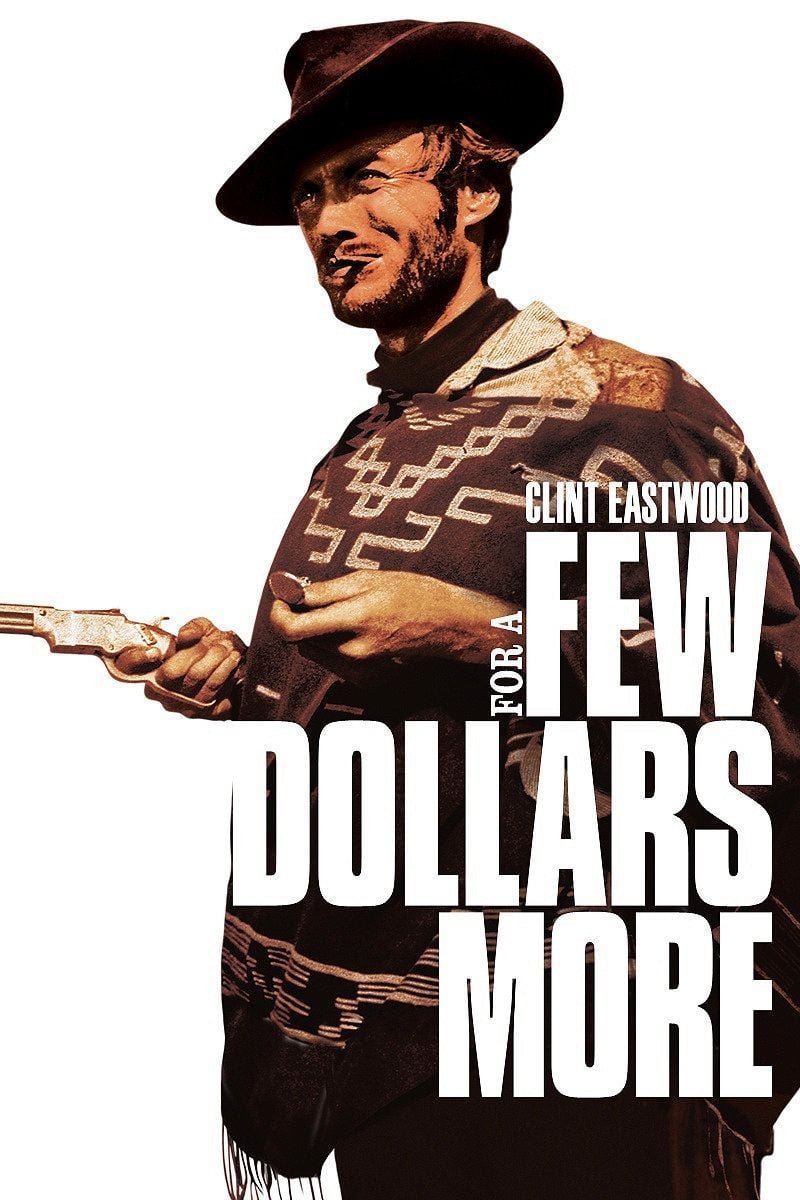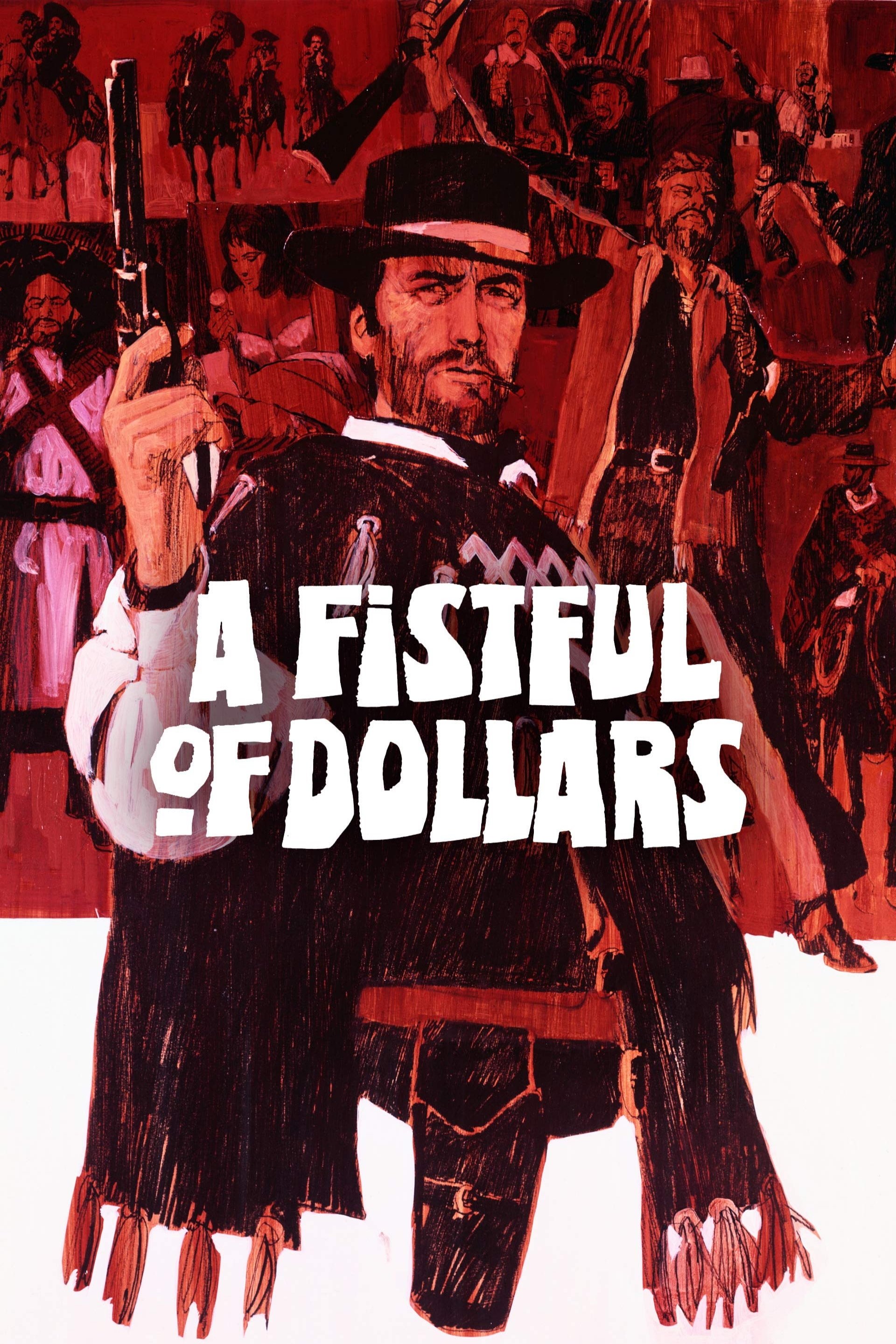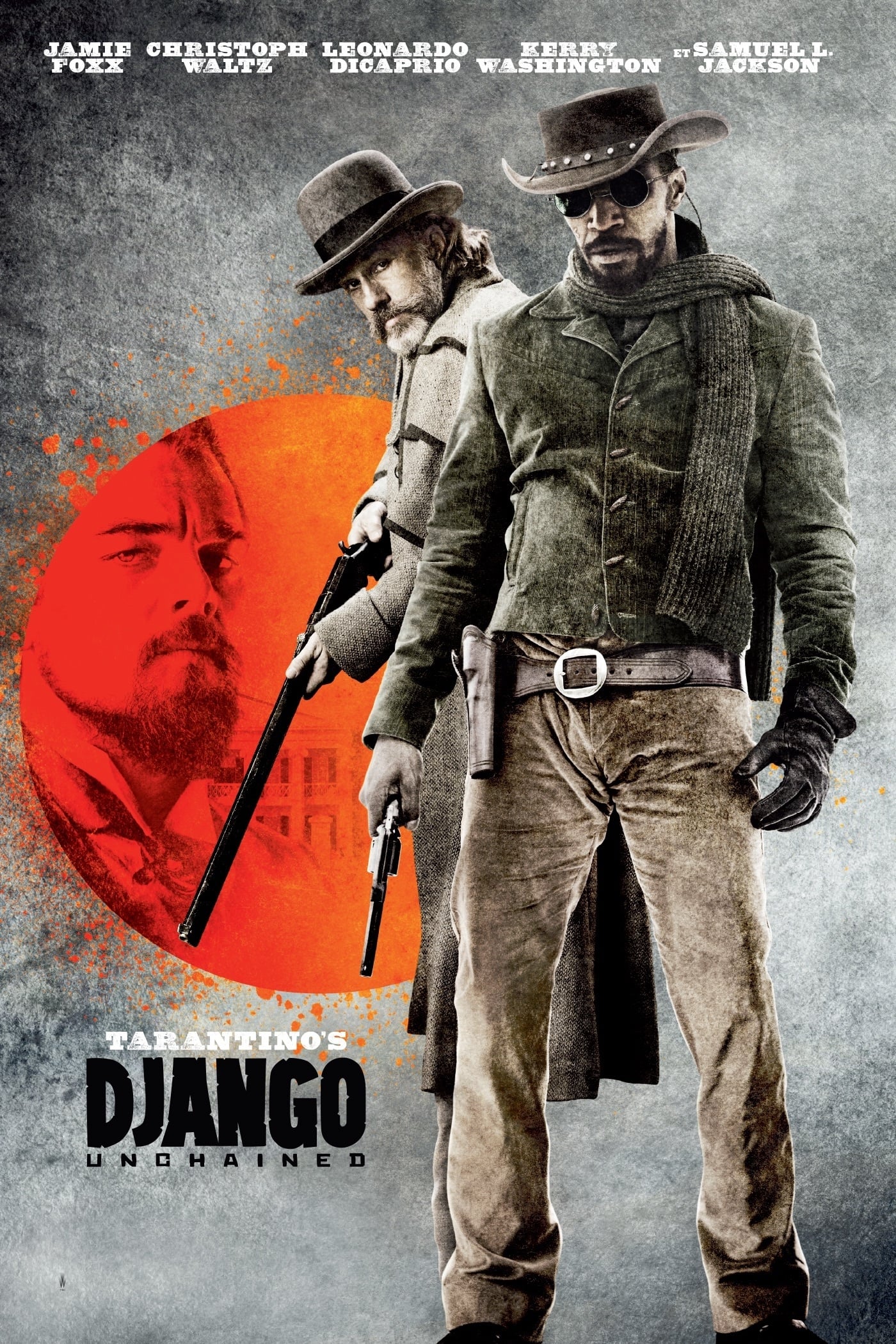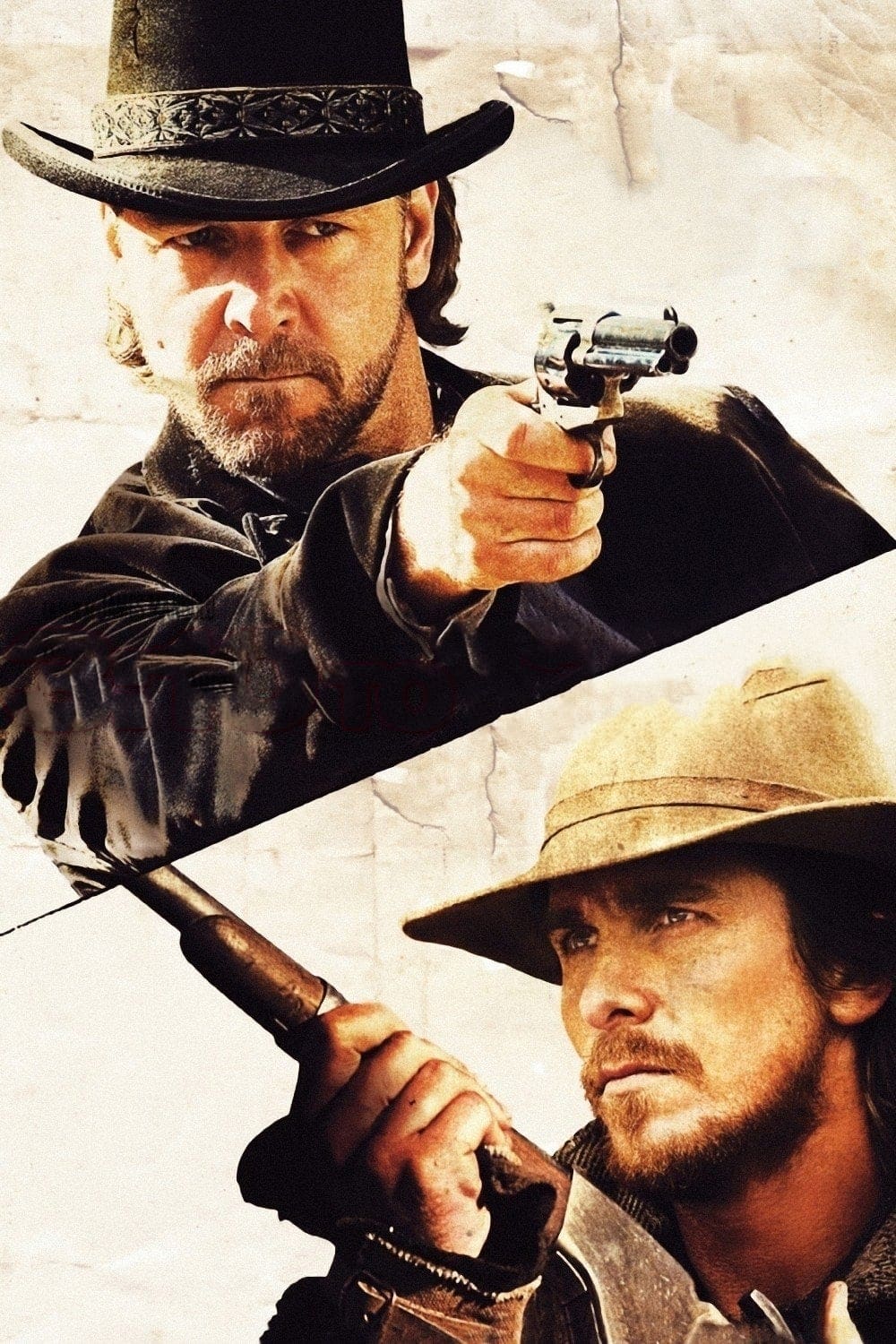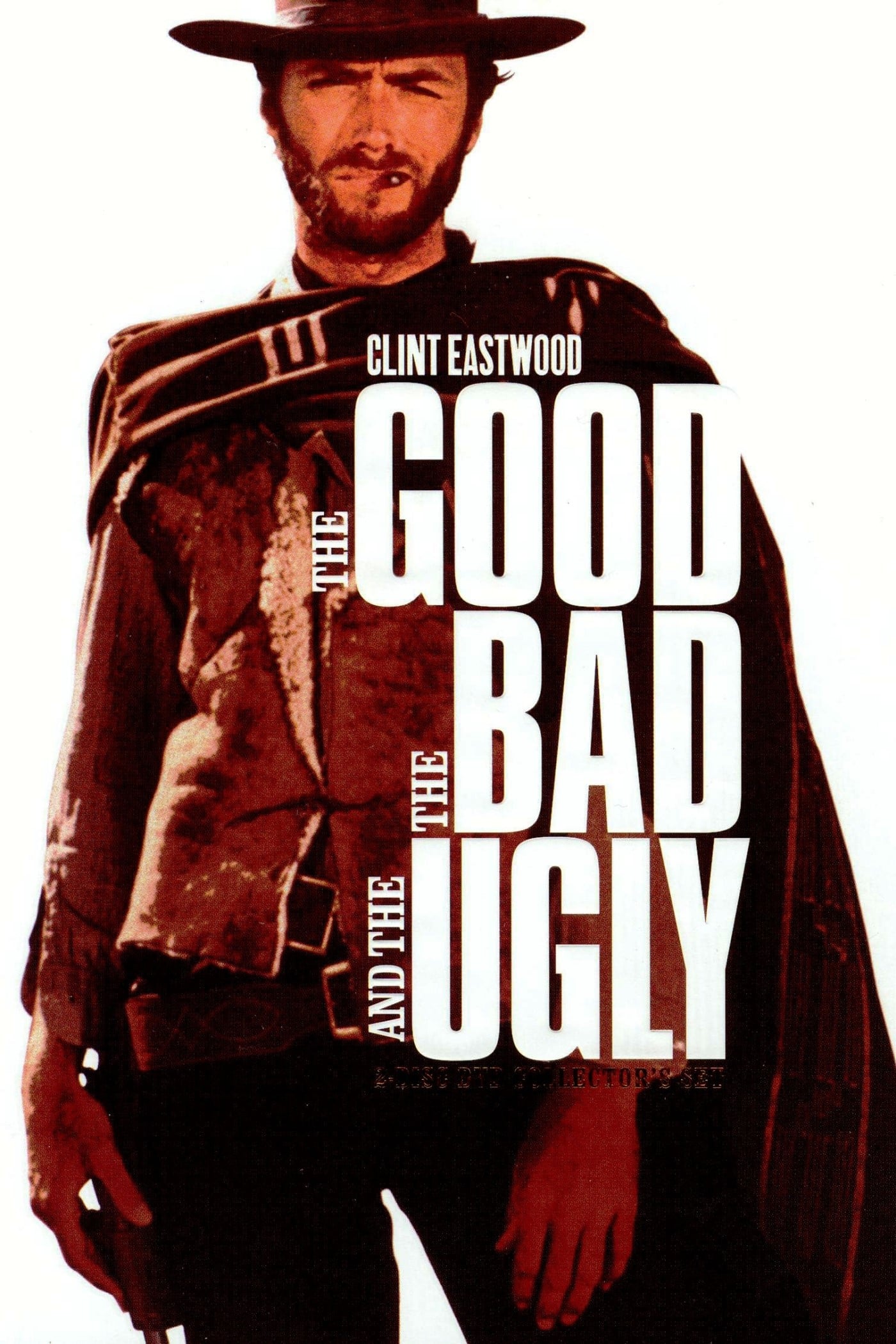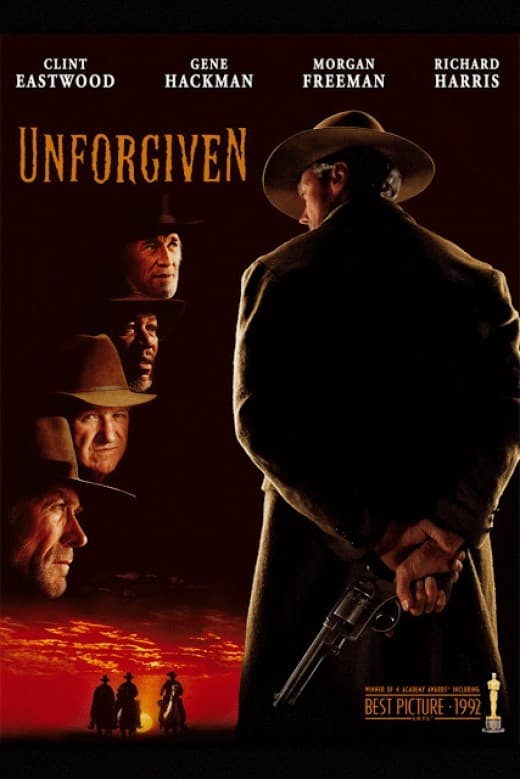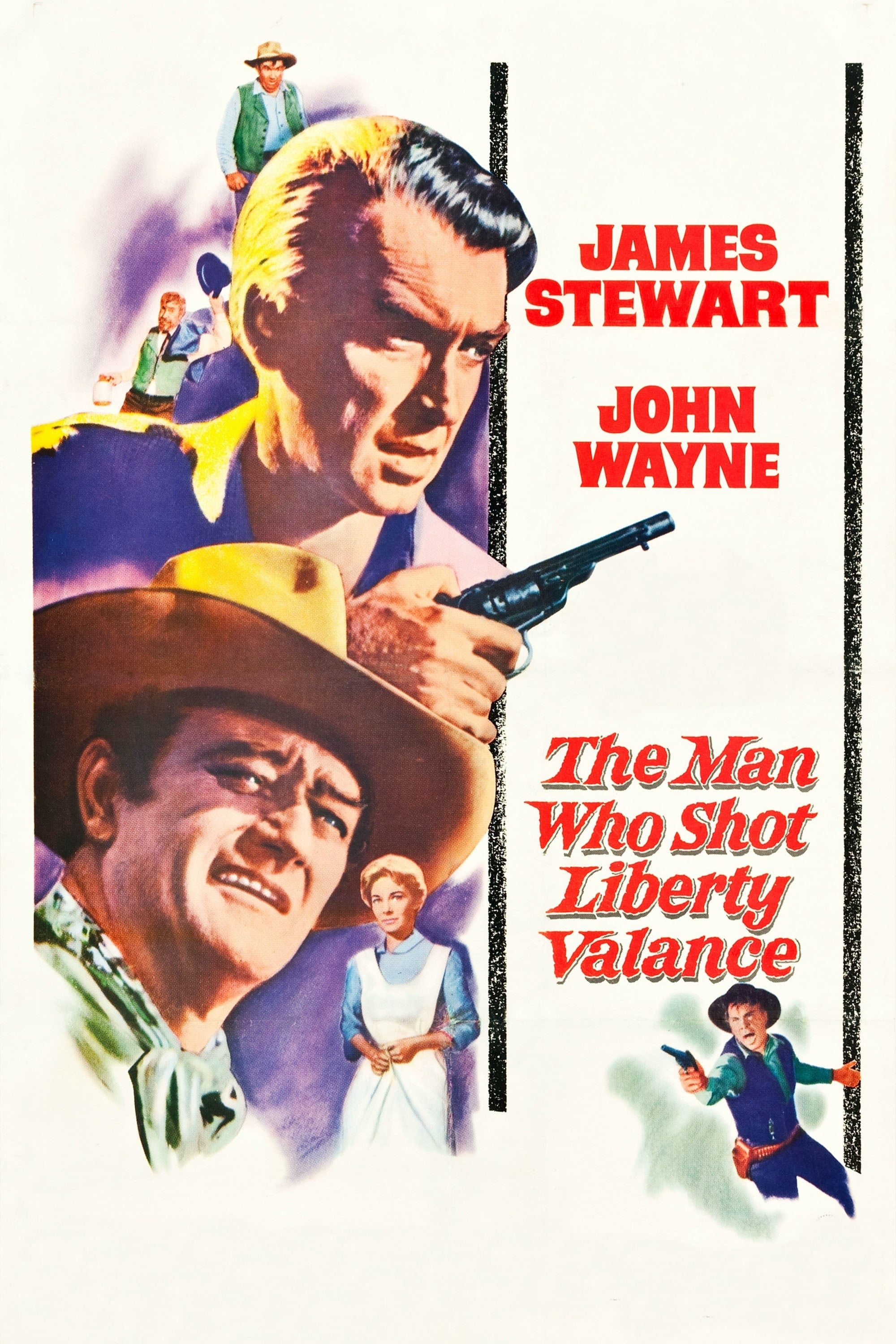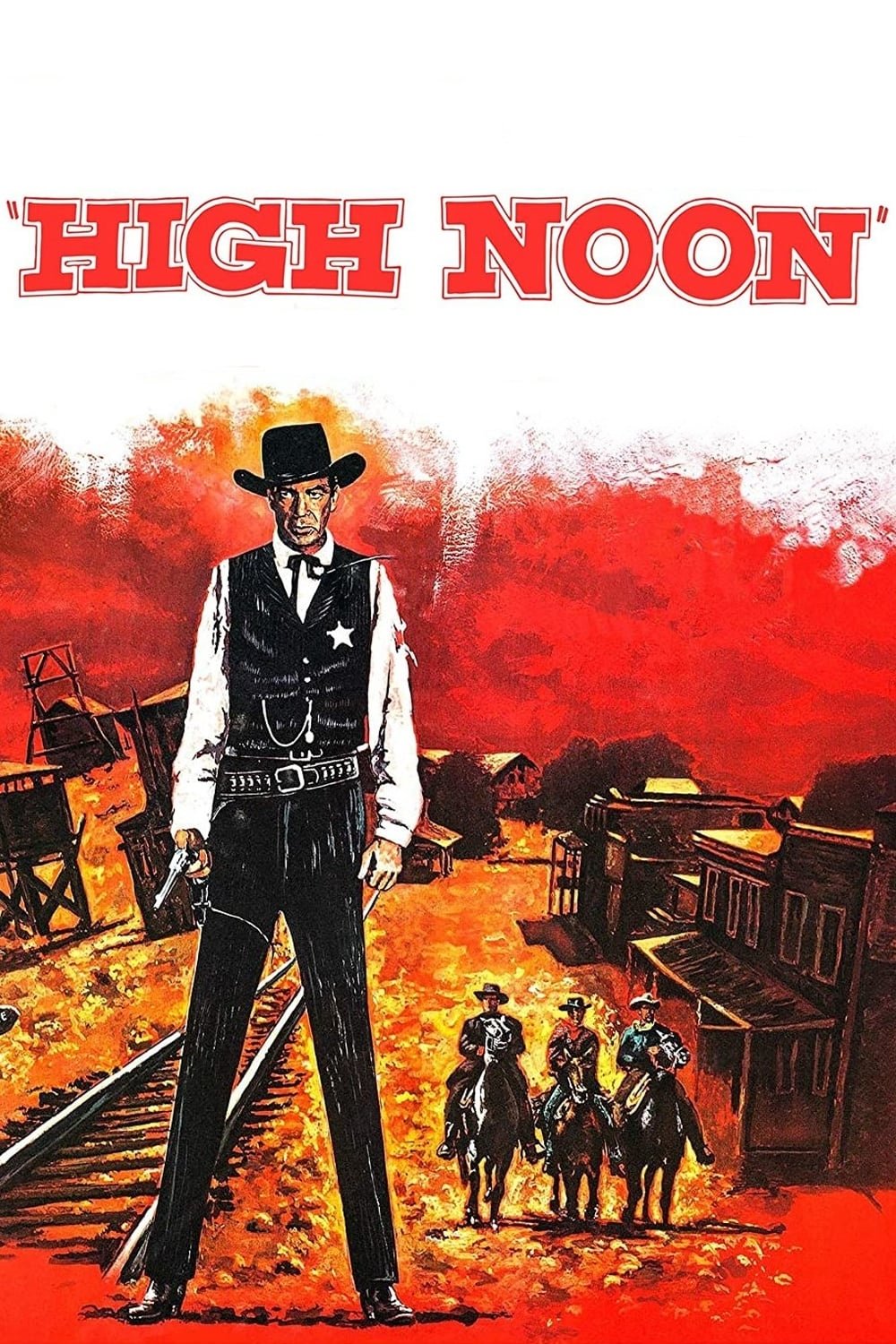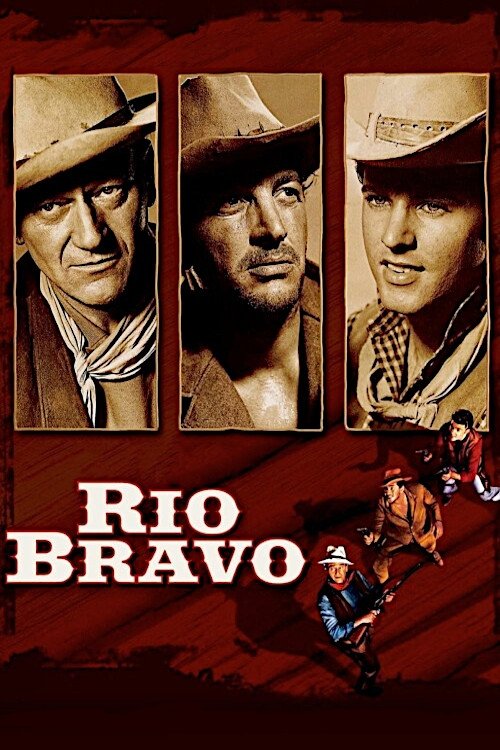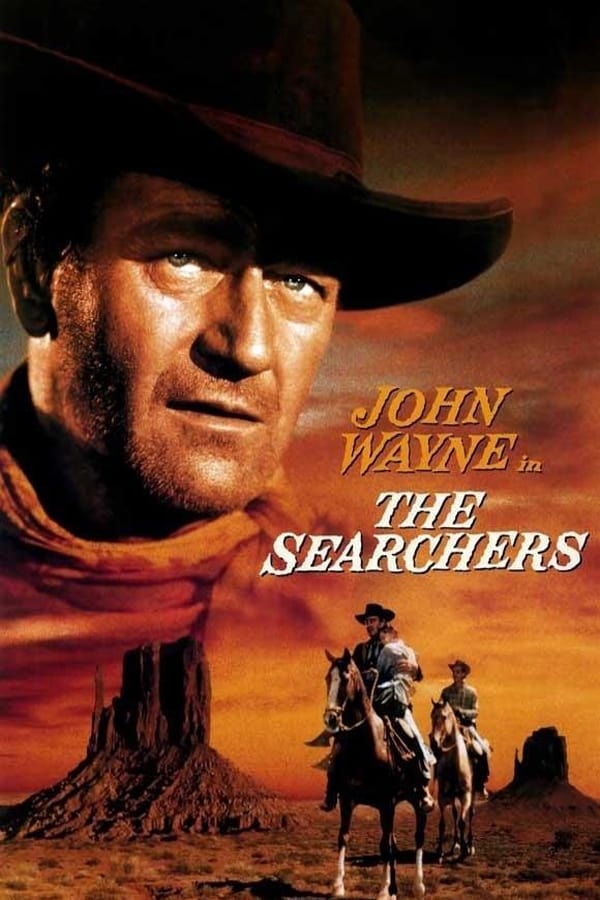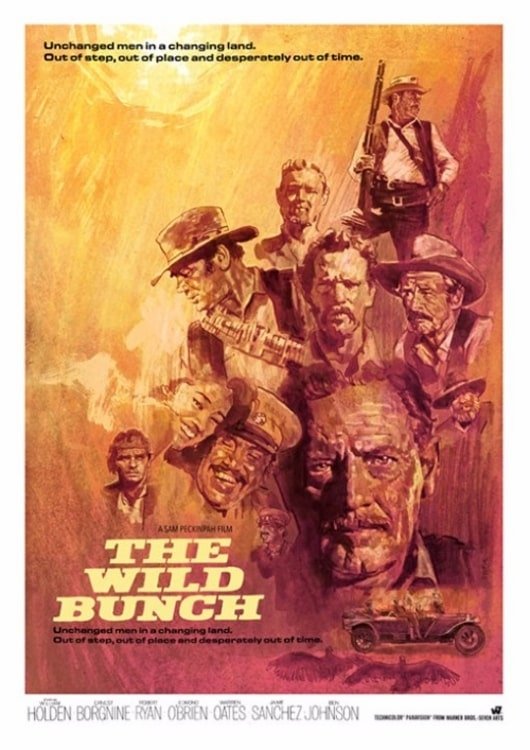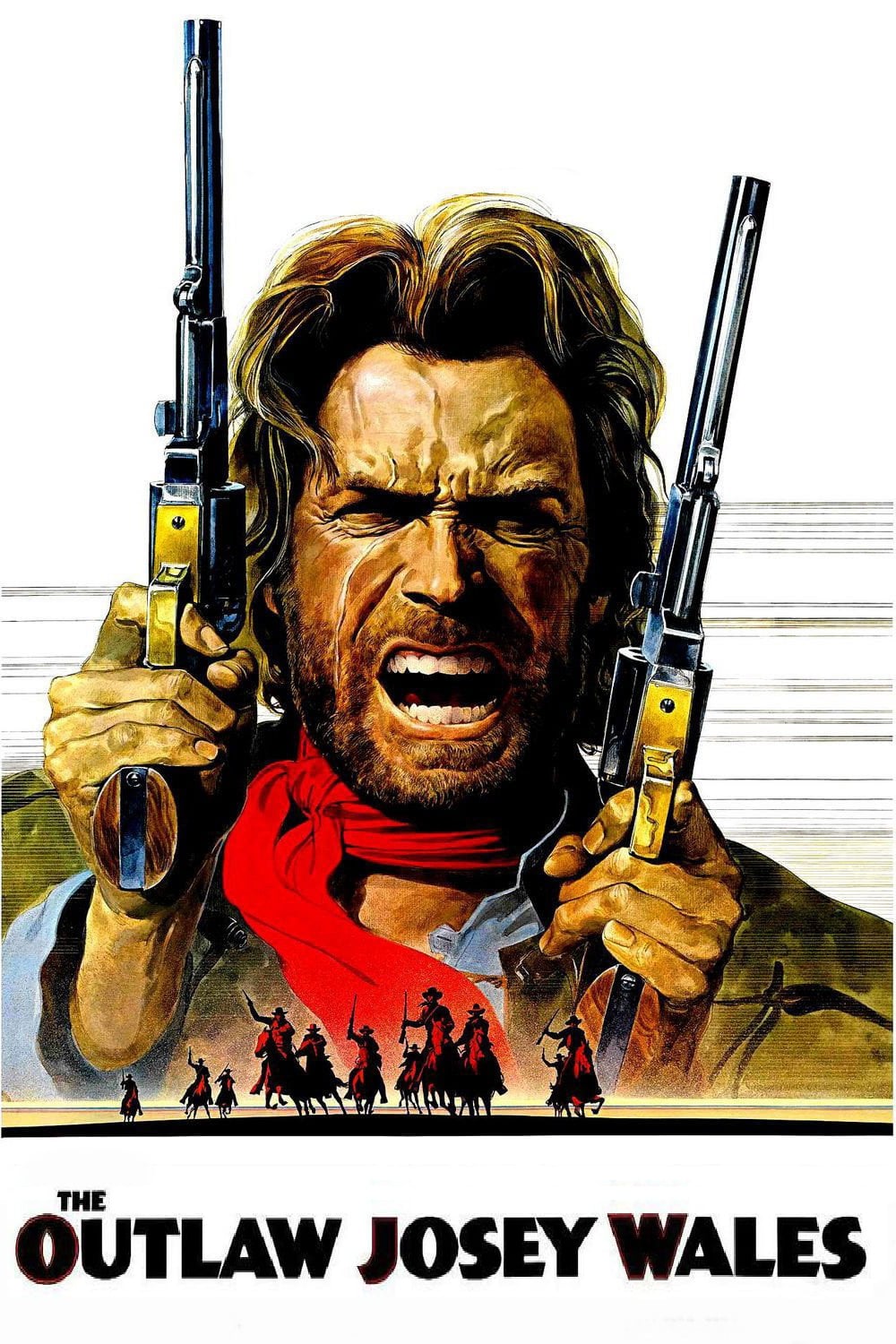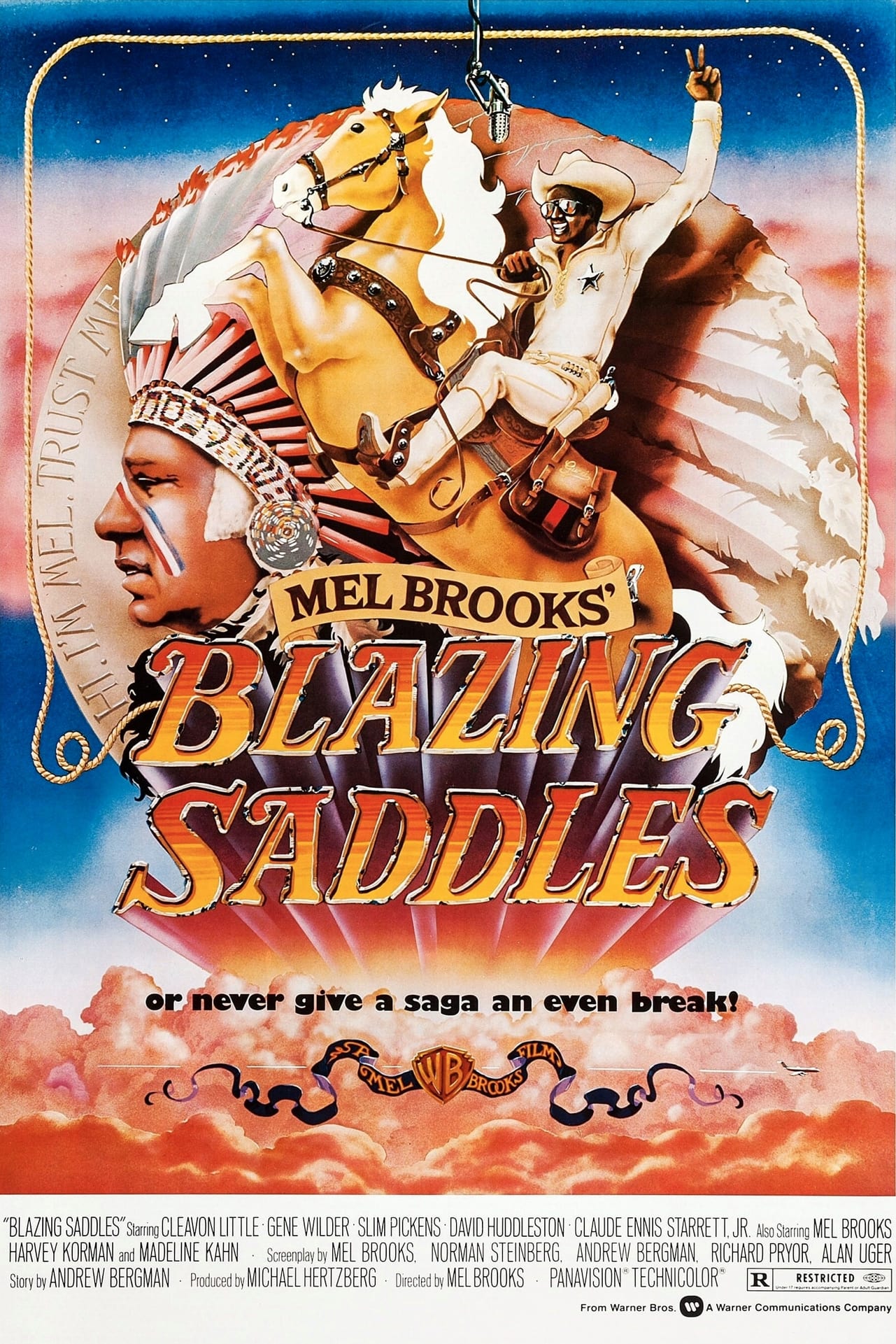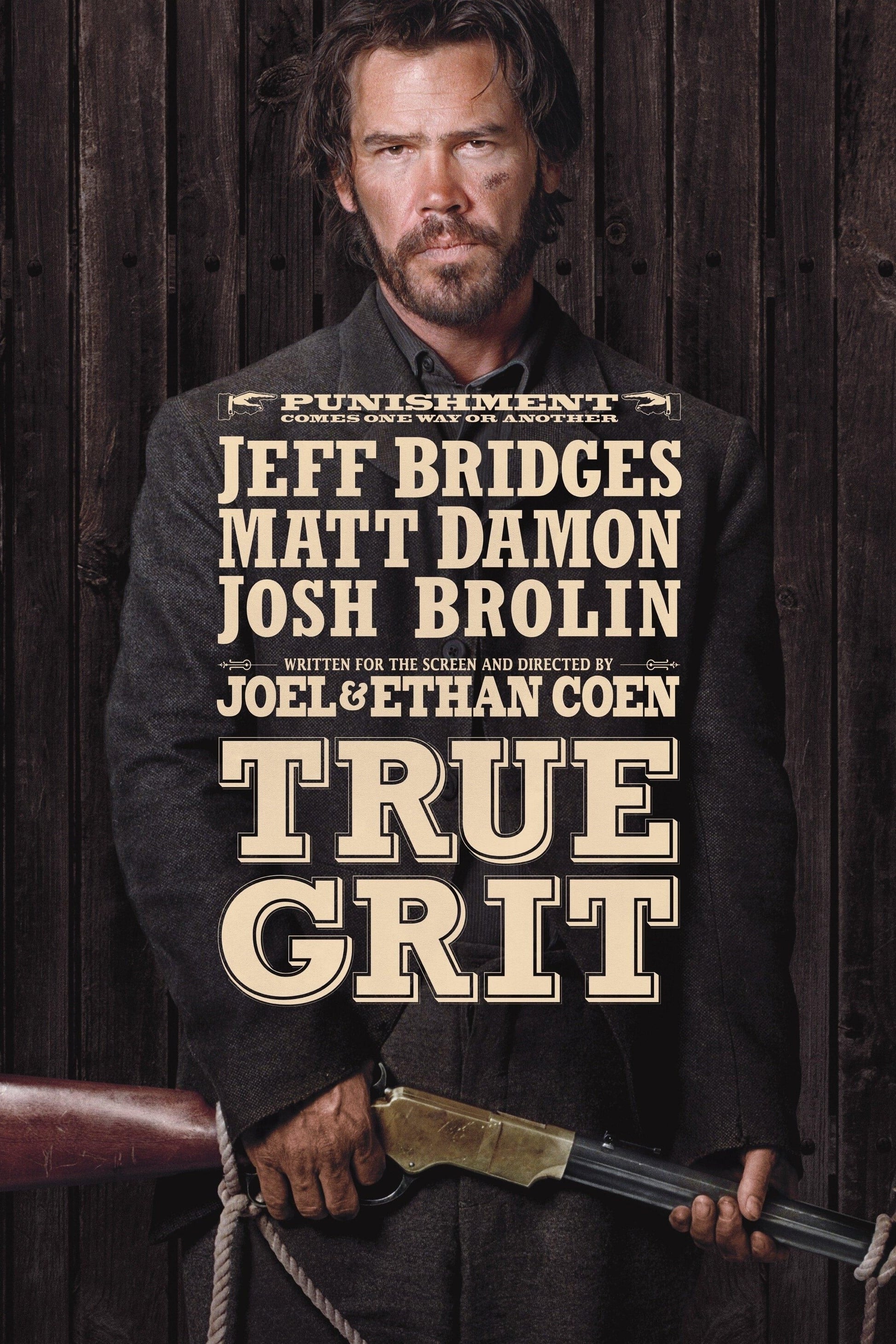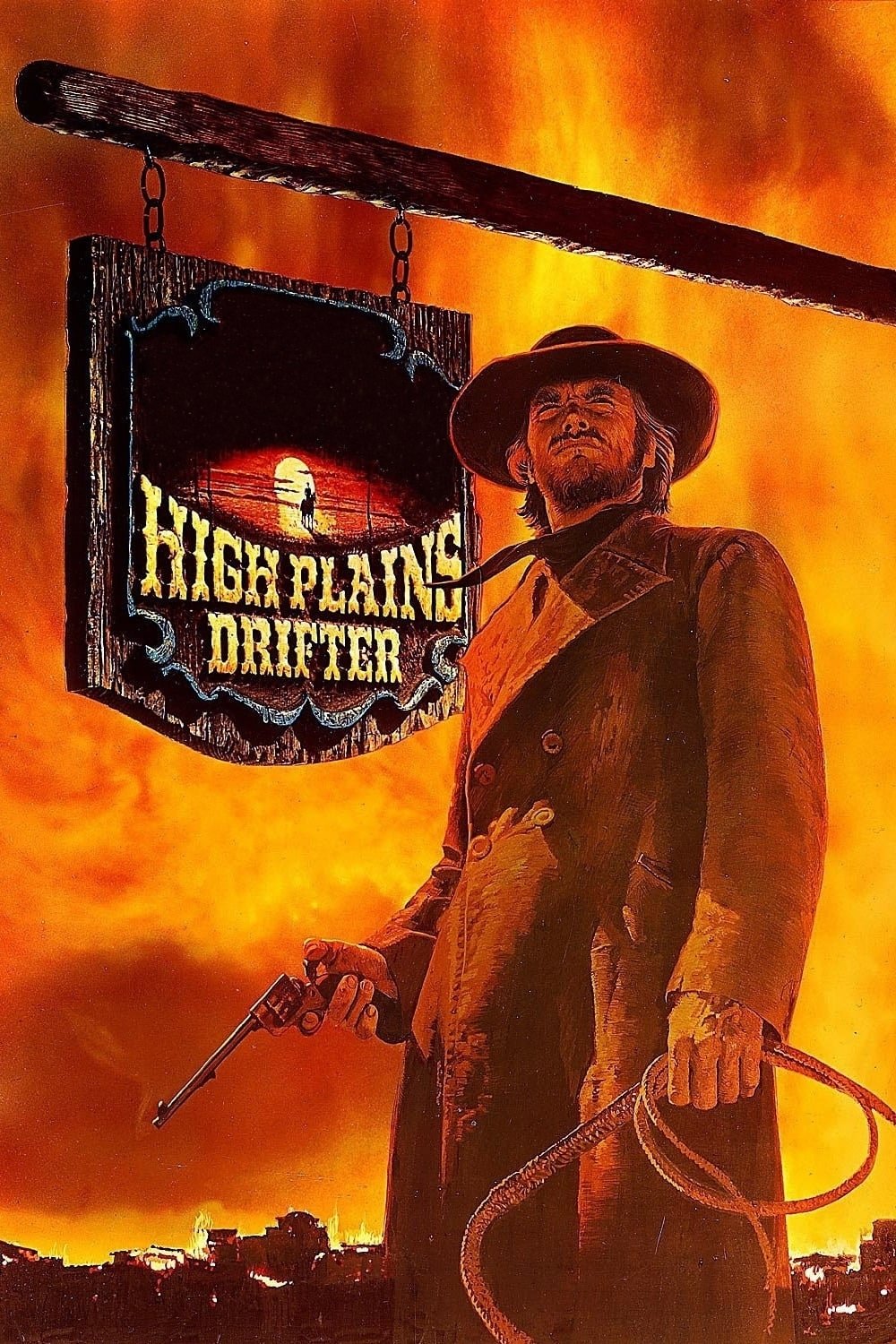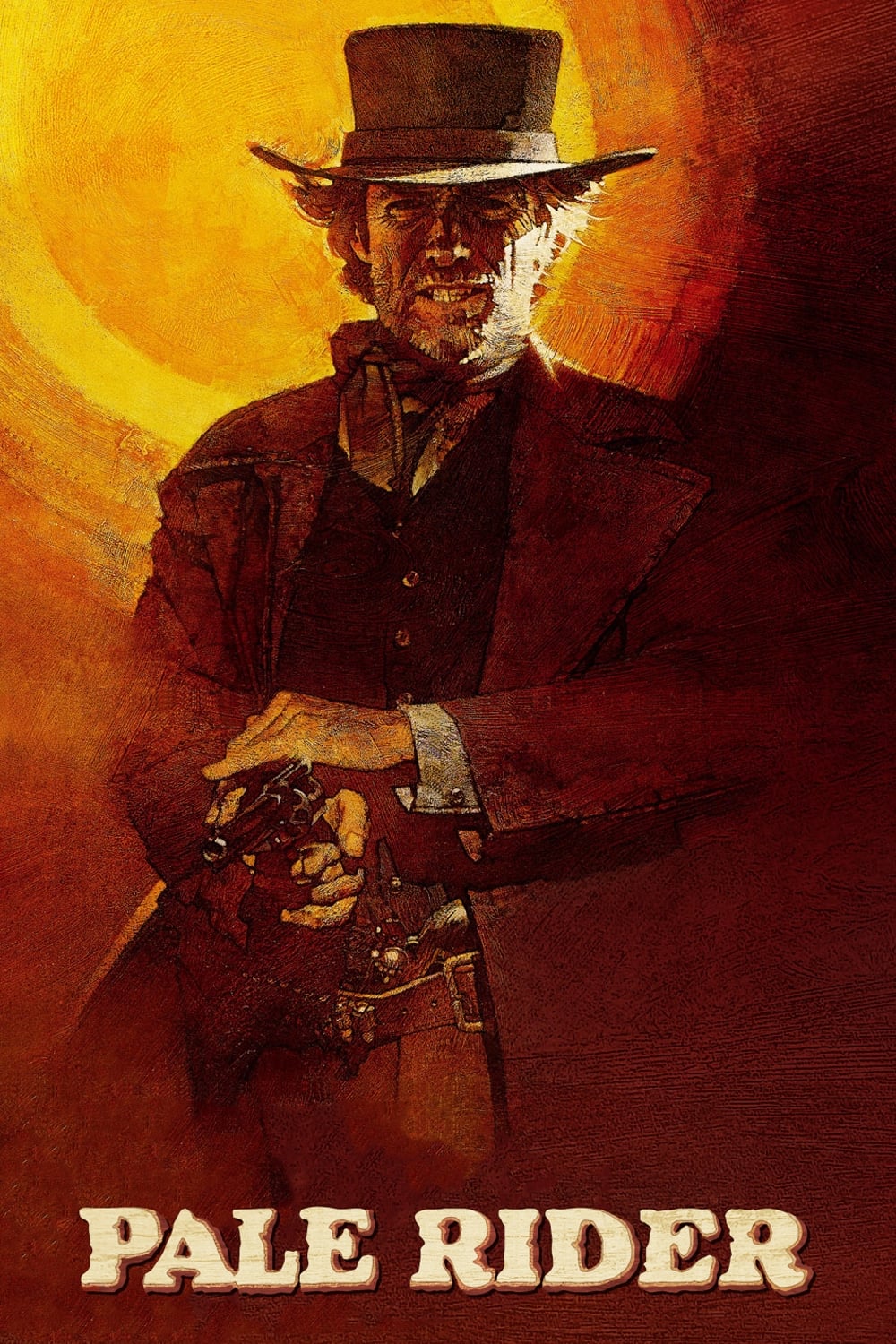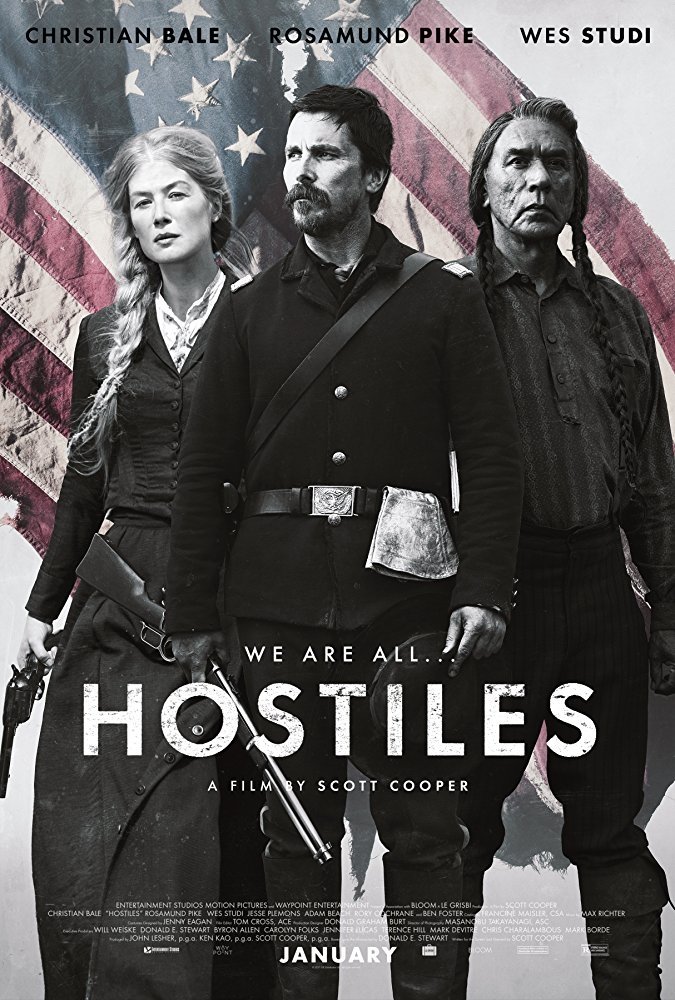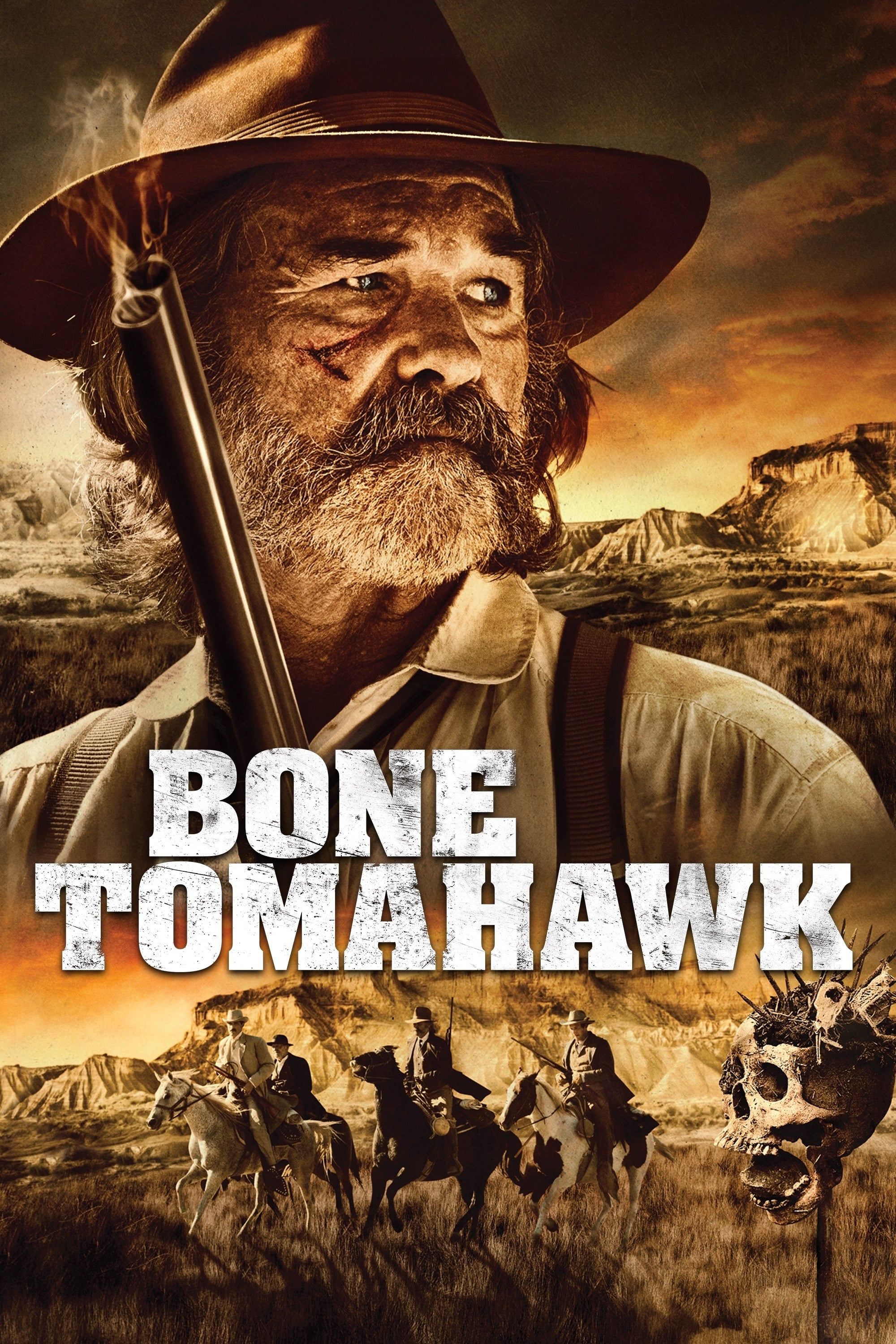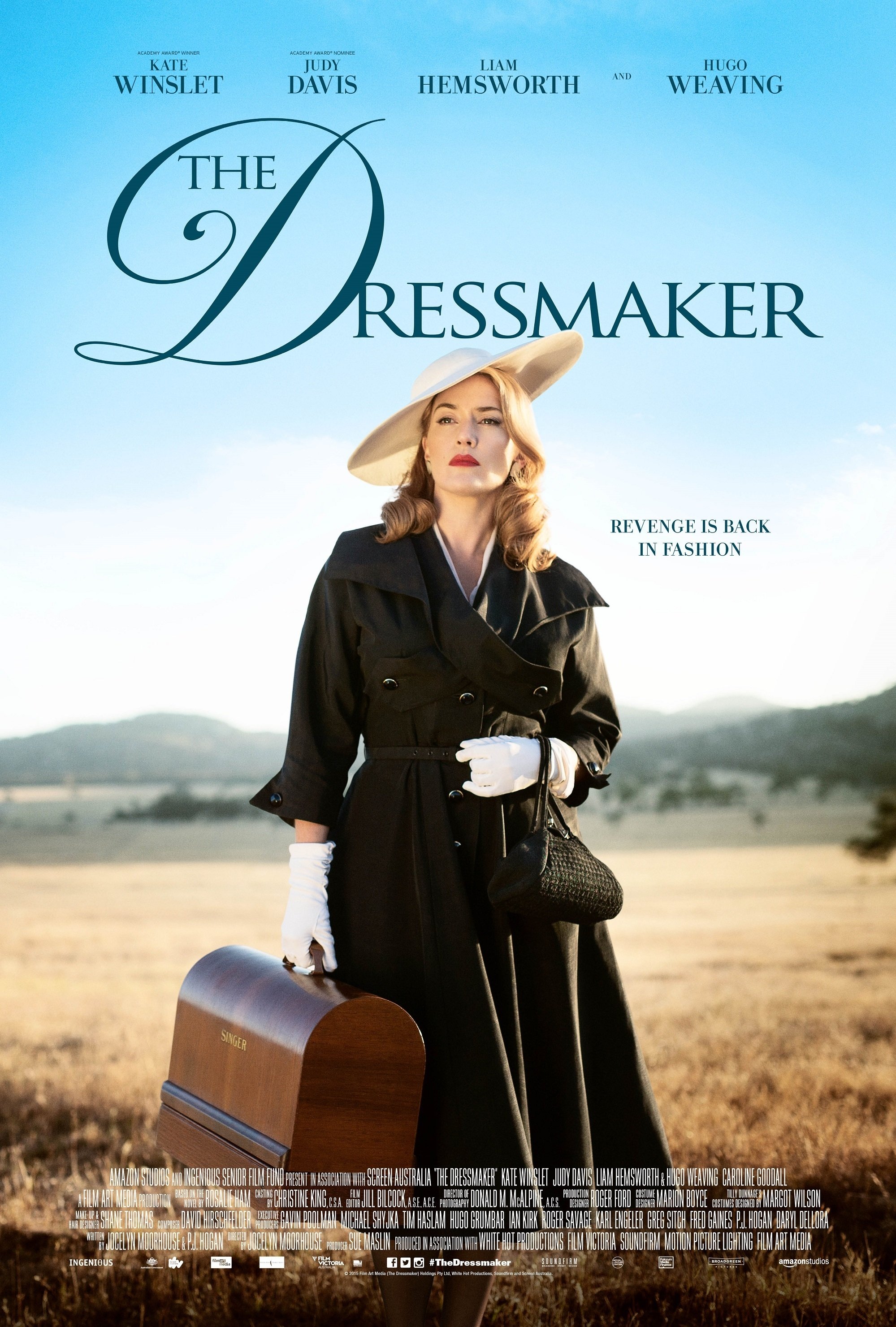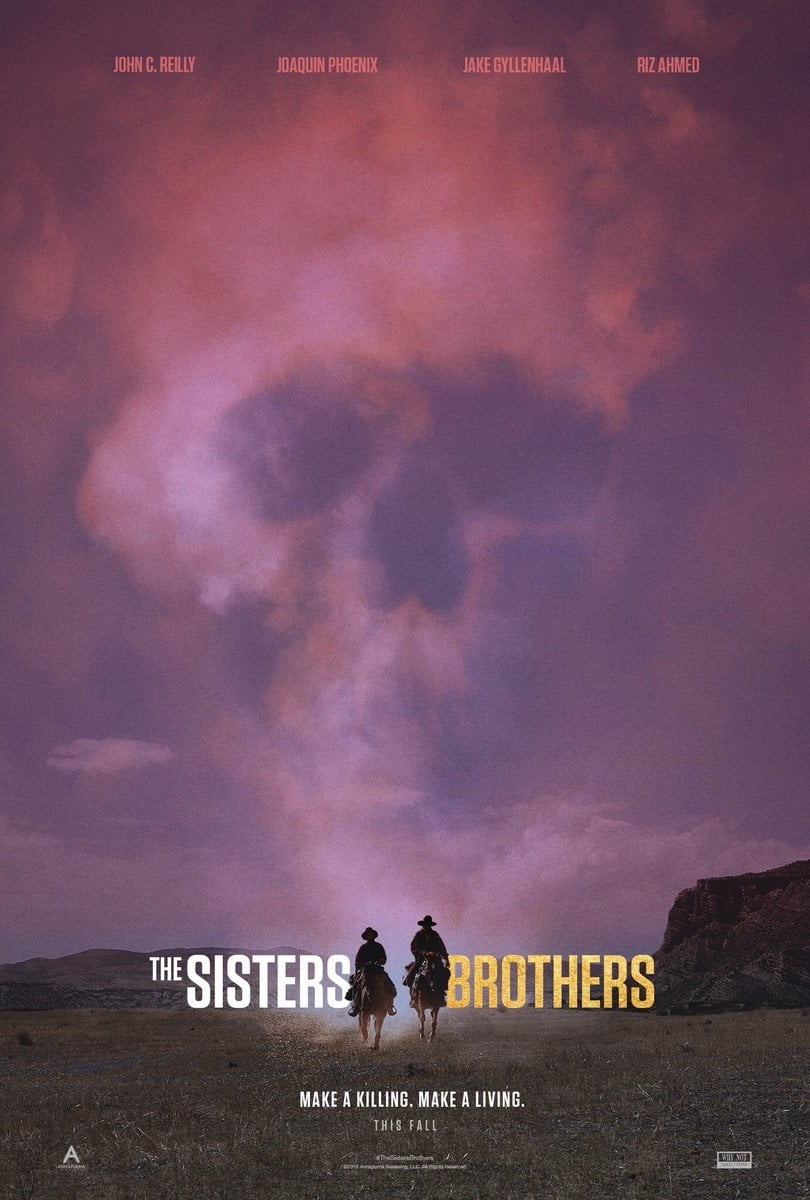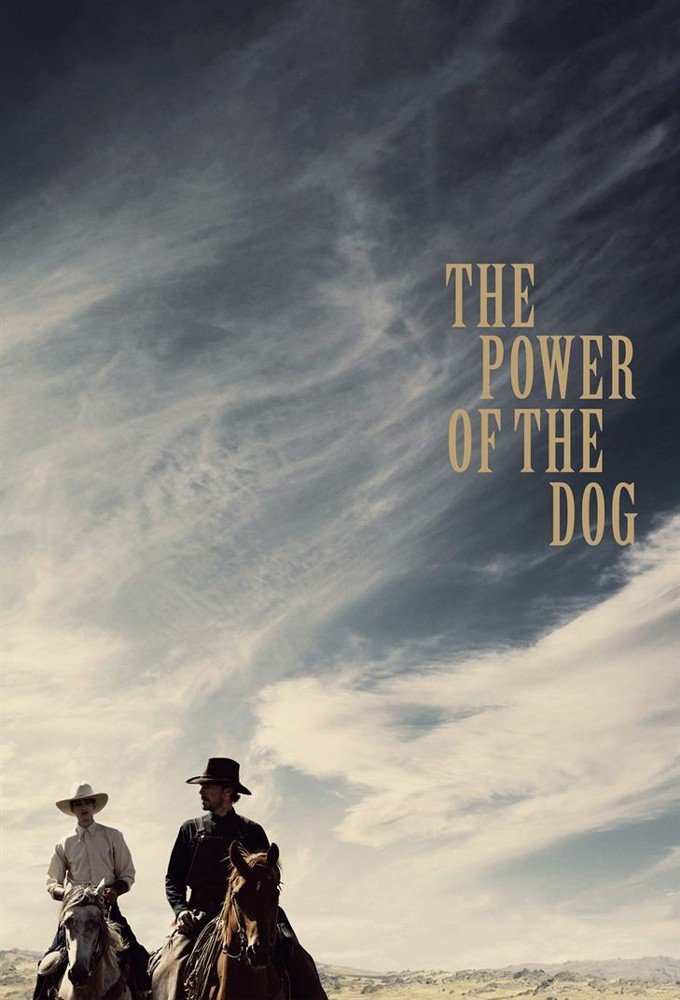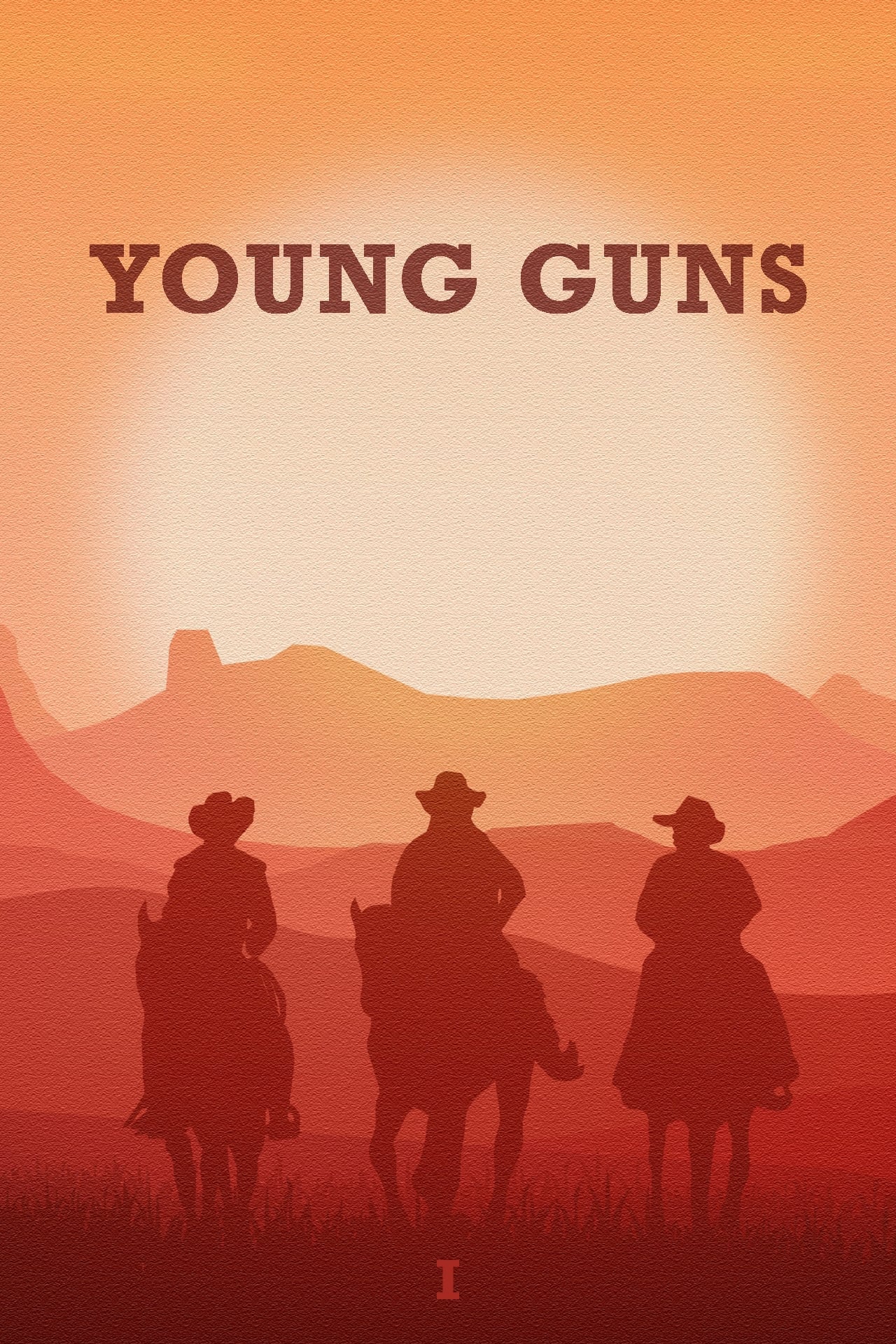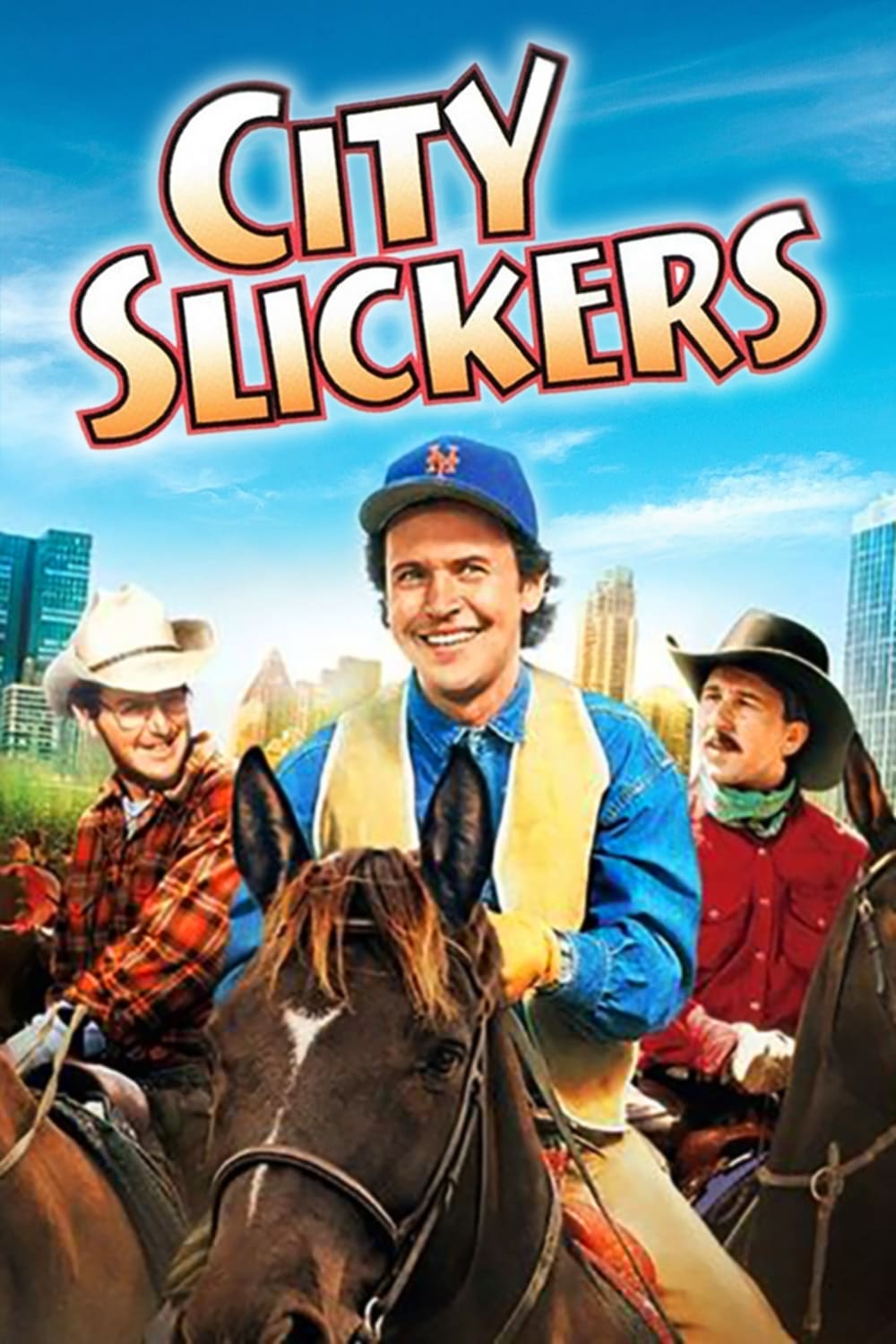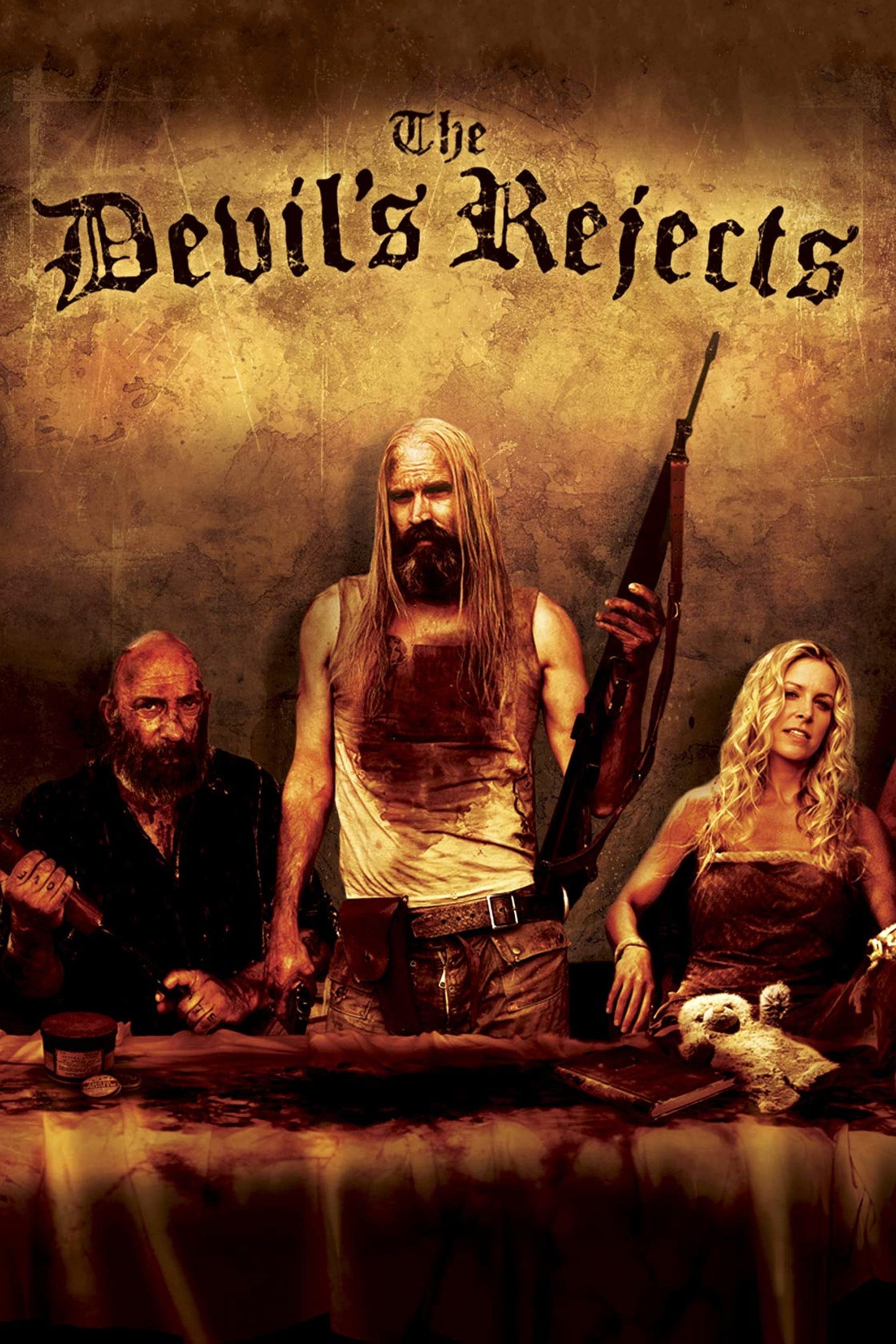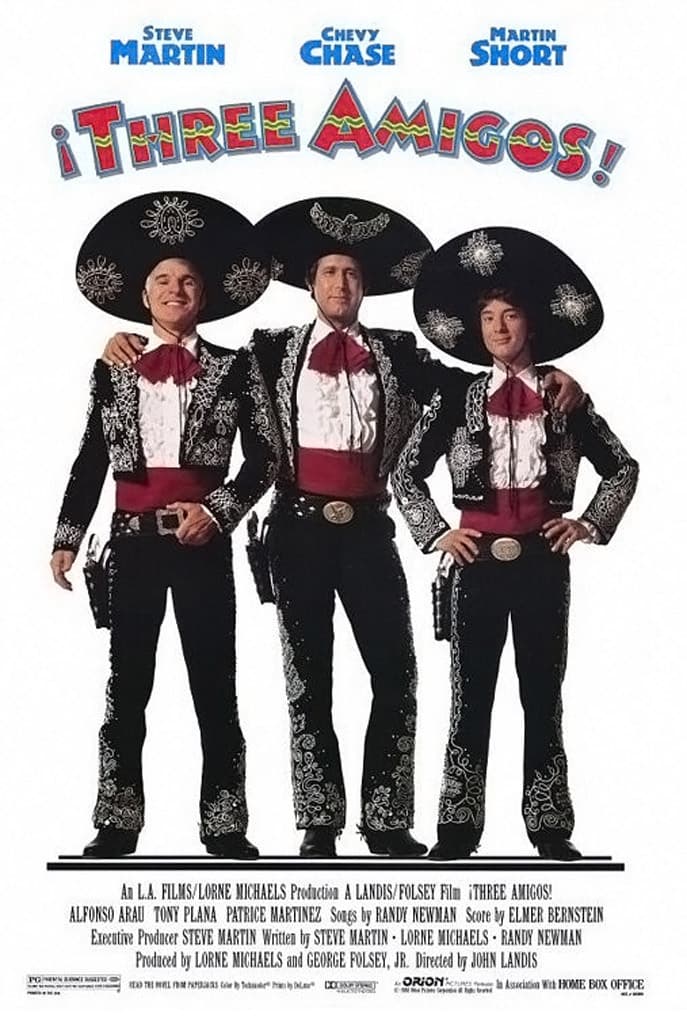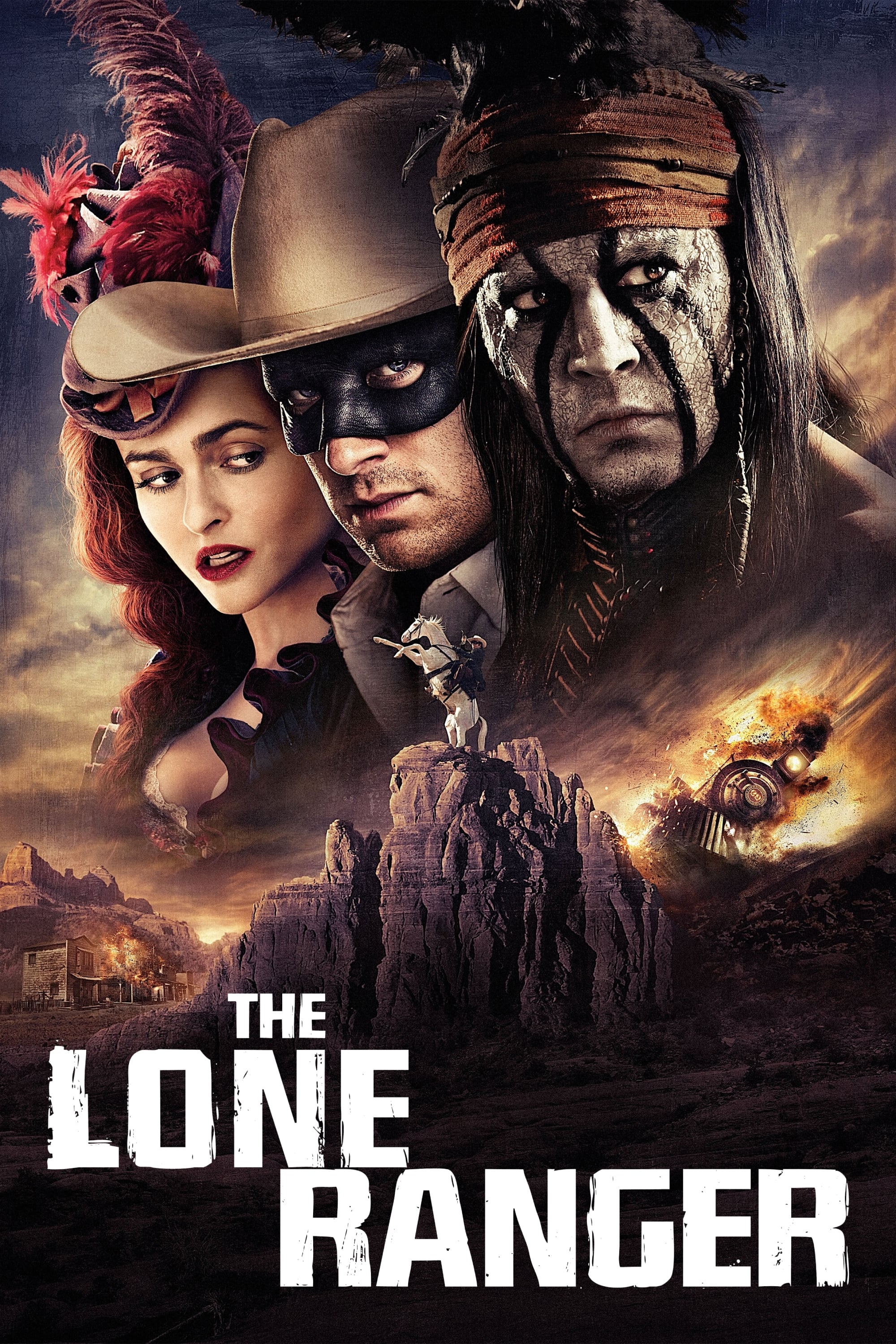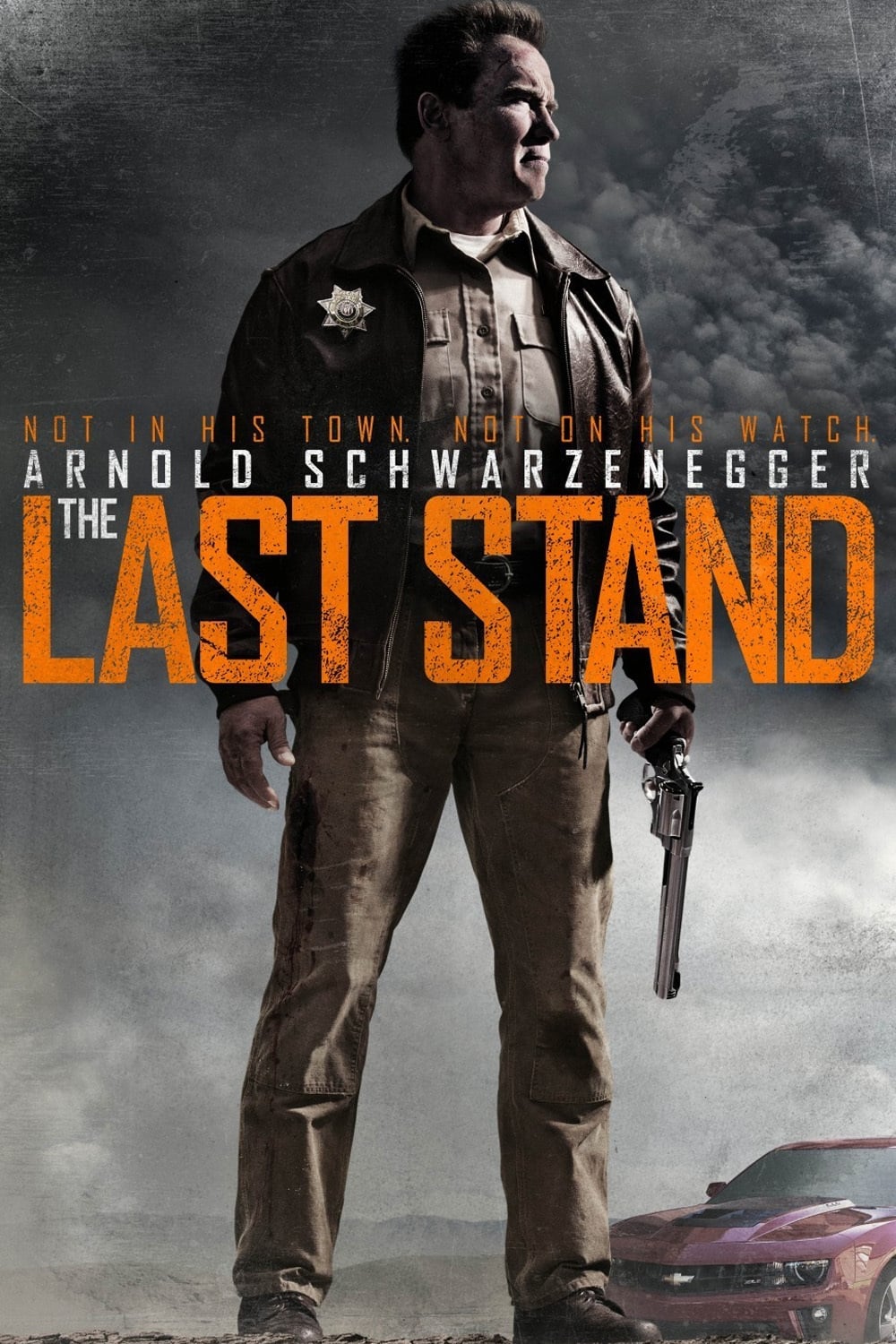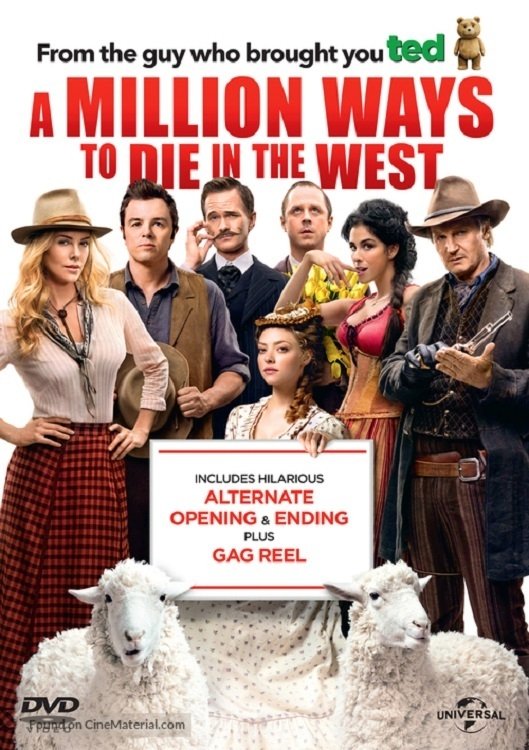Best Western Movies
All topics are curated by you, the community. Free from editorial bias, 100% independent. Upvote your favorite items, propose missing ones and shape the ranking of this topic.
The best western movies ever
People have long cherished the art form of western movies – from the incredible scenery to the amazing characters and stories, westerns bring a special kind of storytelling to the world of film. With so many great western movies out there, it's tough to pick which ones are the best. To help you out, we've put together a list of the top westerns based on the votes of our system's users. So take a look at our compiled list and find the western movie that will take you back to the wild, wild west!
-
Sergio Leone's "Once Upon a Time in the West" stands tall as a monumental and sweeping epic that transports viewers to the vast and untamed landscapes of the American West. With its evocative storytelling, breathtaking cinematography, and an ensemble cast at the top of their game, this film stands as a testament to Leone's mastery of the Western genre and solidifies its place as one of the greatest cinematic achievements of all time.
The film immerses us in a world where the railroad is shaping the destiny of a nation, and the clash between progress and the old ways reverberates through every frame. Leone's direction is nothing short of visionary, as he weaves together a multi-layered tale of greed, revenge, and redemption. The deliberate pacing allows the story to unfold gradually, building tension and creating a sense of anticipation that keeps audiences captivated.
The cinematography of "Once Upon a Time in the West" is a work of art in itself. Leone and his cinematographer, Tonino Delli Colli, paint the screen with breathtaking visuals that linger in the memory long after the film concludes. From the expansive vistas of the West to the intricate close-ups that capture every nuance of the characters' emotions, each shot is meticulously crafted to create a visual symphony that heightens the film's impact.
The ensemble cast delivers performances of exceptional depth and nuance. Charles Bronson's portrayal of the mysterious and relentless harmonica-playing gunslinger is a masterclass in understated intensity. Henry Fonda defies expectations with his chilling and unforgettable turn as the sadistic Frank. Claudia Cardinale shines as Jill, a woman caught in the crossfire of a changing world. Jason Robards brings a rugged charm to his role as the outlaw Cheyenne. Their performances create a tapestry of complex and flawed characters that resonate long after the credits roll.
Ennio Morricone once again collaborates with Leone, providing a haunting and evocative score that lingers in the soul. From the melancholic harmonica melodies to the soaring orchestral compositions, Morricone's music elevates the film to new heights. The score becomes an integral part of the narrative, enhancing the emotional impact of every scene and adding an extra layer of depth to the storytelling.
"Once Upon a Time in the West" transcends the boundaries of a traditional Western. It is a meditation on the passage of time, the fading of an era, and the indomitable spirit of those who must adapt to survive. Leone's exploration of themes such as justice, revenge, and the price of progress gives the film a timeless quality that resonates with audiences across generations.
In conclusion, "Once Upon a Time in the West" is a masterpiece of epic proportions. Sergio Leone's visionary direction, coupled with a stellar ensemble cast, mesmerizing cinematography, and Ennio Morricone's haunting score, creates an unforgettable cinematic experience. This film is a testament to the power of storytelling and a reminder of the enduring impact of cinema as an art form. Whether you are a fan of Westerns or simply appreciate exceptional filmmaking, "Once Upon a Time in the West" is an absolute must-watch.
from wikipedia.orgRetreiving from wikipedia...
-
"The Magnificent Seven" directed by John Sturges and released in 1960, is a classic Western that has left an indelible mark on the genre. With its iconic cast, sweeping landscapes, and themes of honor and heroism, the film stands as a timeless masterpiece that continues to captivate audiences.
At the heart of "The Magnificent Seven" is a group of seven gunslingers who band together to protect a Mexican village from a band of ruthless bandits. The ensemble cast is a powerhouse of talent, featuring legends such as Yul Brynner, Steve McQueen, Charles Bronson, and James Coburn. Each actor brings depth and charisma to their respective characters, making them both relatable and larger-than-life figures.
John Sturges' direction is confident and assured, balancing action-packed sequences with moments of introspection and character development. He captures the grandeur of the American West and the harsh beauty of the Mexican landscapes, transporting viewers into a world of dusty towns and wide-open spaces. Sturges' attention to detail and command of the medium create a visually stunning experience that stands the test of time.
The screenplay, written by William Roberts, explores themes of sacrifice, redemption, and the power of ordinary individuals to rise to extraordinary challenges. It effectively balances the individual stories of the seven heroes with the larger narrative of the village's struggle for survival. The script deftly combines moments of levity and heart with thrilling action sequences, keeping the audience engaged from start to finish.
Visually, "The Magnificent Seven" is a feast for the eyes. Charles Lang's cinematography beautifully captures the landscapes and provides a rich visual tapestry for the characters' journey. The film's production design and costumes further enhance the authenticity and immersive nature of the story, transporting viewers to the Old West.
Elmer Bernstein's iconic musical score is instantly recognizable and perfectly complements the film's epic scope. The sweeping orchestral melodies evoke a sense of adventure, honor, and camaraderie, heightening the emotional impact of the film's pivotal moments.
"The Magnificent Seven" is a testament to the enduring power of heroism and the pursuit of justice. It explores the complexities of morality, loyalty, and the bonds formed between unlikely allies. The film's themes of sacrifice and honor resonate with audiences, appealing to our collective desire for justice and the triumph of good over evil.
In conclusion, "The Magnificent Seven" is a cinematic masterpiece that has solidified its place in Western lore. With its stellar ensemble cast, breathtaking visuals, and timeless themes, the film continues to captivate audiences with its epic scope and emotional resonance. John Sturges' directorial prowess, the exceptional performances, and the film's exploration of honor and heroism make it a must-watch for fans of the genre and those seeking an immersive and thrilling cinematic experience.
-
"The Magnificent Seven" (2016), directed by Antoine Fuqua, is a modern-day remake of the classic Western film. While it may not surpass the brilliance of its predecessor, it still manages to deliver an entertaining and action-packed experience with a talented ensemble cast and thrilling set pieces.
The film follows the story of a small town that falls under the oppressive rule of a ruthless industrialist, played by Peter Sarsgaard. In a desperate attempt to reclaim their freedom, the townsfolk seek the help of seven outlaws, bounty hunters, and hired guns to defend them. Denzel Washington leads the ensemble cast as the wise and skillful gunslinger Sam Chisolm, joined by Chris Pratt, Ethan Hawke, Vincent D'Onofrio, and others, each bringing their own unique flavor to their respective characters.
Antoine Fuqua's direction is stylish and fast-paced, infusing the film with energy and excitement. The action sequences are well-choreographed and intense, keeping viewers on the edge of their seats. Fuqua effectively captures the essence of the Western genre, showcasing sweeping landscapes, dusty towns, and gritty gunfights, all while infusing the story with a modern sensibility.
The performances in "The Magnificent Seven" are a definite highlight. Denzel Washington brings gravitas to his role as the leader of the group, portraying Chisolm as a strong and enigmatic figure. Chris Pratt injects the film with his signature charm and humor, providing some much-needed levity amidst the tension. The chemistry between the ensemble cast is palpable, creating a believable camaraderie among the group of seven.
The screenplay, written by Nic Pizzolatto and Richard Wenk, follows the familiar formula of a group of disparate individuals coming together to protect the weak against overwhelming odds. While the story lacks some of the depth and character development of the original film, it still manages to capture the spirit of camaraderie and heroism that made the original so beloved. The dialogue is snappy and occasionally witty, and the film pays homage to its predecessor while adding its own modern touches.
Visually, "The Magnificent Seven" is stunning, with breathtaking cinematography that showcases the vastness and beauty of the American frontier. The production design and costume work effectively transport viewers to the Old West, immersing them in the gritty and rugged atmosphere of the time period.
While "The Magnificent Seven" may not reach the heights of the original, it is an enjoyable and action-packed Western that pays tribute to its predecessor while adding its own modern flair. The talented cast, gripping action sequences, and stylish direction make it a solid entry in the genre. It serves as a reminder of the enduring appeal of the story of a few brave individuals standing up against injustice and fighting for what is right.
In conclusion, "The Magnificent Seven" (2016) may not reinvent the genre, but it offers a fun and thrilling ride for fans of Westerns and action films alike. With its charismatic cast, well-executed action sequences, and stunning visuals, it successfully captures the essence of the Wild West and delivers an entertaining cinematic experience.
-
Sergio Leone's "For a Few Dollars More" is a riveting follow-up to his groundbreaking film, "A Fistful of Dollars" and solidifies his status as a master of the spaghetti Western genre. Released in 1965, this thrilling and stylish tale of revenge and redemption takes us on a gritty journey through a lawless frontier, filled with iconic characters, explosive gunfights, and a gripping narrative.
Clint Eastwood reprises his role as the enigmatic "Man with No Name" delivering another captivating performance that oozes coolness and quiet intensity. Alongside him is Lee Van Cleef as the relentless and enigmatic bounty hunter, Colonel Douglas Mortimer. The chemistry and interplay between these two actors are electrifying, creating a dynamic and compelling duo that commands the screen.
Leone's direction is nothing short of masterful, showcasing his signature style that combines gritty realism with stylish flourishes. The film's visual aesthetic is rich and atmospheric, with Leone's meticulous attention to detail bringing the Old West to life. From the sun-baked landscapes to the dilapidated towns, every frame is imbued with a sense of authenticity and grit, transporting viewers to a world where lawlessness reigns supreme.
The film's pacing is carefully crafted, allowing tension to build steadily as the characters' paths converge. Leone expertly weaves multiple narrative threads together, keeping audiences on the edge of their seats. The plot unfolds with intricate precision, blending action, suspense, and unexpected twists that keep viewers engaged from start to finish.
Ennio Morricone's iconic score once again elevates the film, enhancing the atmosphere and accentuating the emotions on screen. The memorable musical motifs, ranging from haunting melodies to thunderous percussion, contribute to the film's tension and serve as an extension of the characters themselves. Morricone's music has become synonymous with the Western genre, and his work in "For a Few Dollars More" is no exception.
The film delves into themes of vengeance, honor, and the blurred lines between good and evil. It explores the motivations of its characters, revealing their hidden depths and the personal demons that drive them. As the narrative unfolds, layers of complexity are peeled back, adding depth to the story and challenging preconceived notions of heroism and morality.
"For a Few Dollars More" showcases Leone's mastery of the art of the gunfight. The film's set pieces are impeccably choreographed, combining kinetic action with strategic planning, creating sequences that are as thrilling as they are visually striking. These meticulously crafted showdowns have become iconic moments in cinematic history, showcasing Leone's ability to infuse tension and excitement into every frame.
In conclusion, "For a Few Dollars More" is a riveting and stylish spaghetti Western that cements Sergio Leone's status as a visionary filmmaker. With its compelling performances, meticulous direction, and Ennio Morricone's unforgettable score, the film is a thrilling ride from beginning to end. It captures the essence of the Old West, explores complex themes, and delivers an unforgettable cinematic experience that continues to resonate with audiences today.
from wikipedia.orgRetreiving from wikipedia...
-
"A Fistful of Dollars" directed by Sergio Leone and released in 1964, is a groundbreaking and gritty Spaghetti Western that revolutionized the genre and introduced the world to the iconic "Man with No Name". With its stylish cinematography, memorable score, and Clint Eastwood's unforgettable performance, the film has become a timeless classic and a benchmark of the Western genre.
Clint Eastwood's portrayal of the enigmatic and mysterious stranger, often referred to as the "Man with No Name," is a defining role that solidified his status as a Western icon. With his steely gaze, laconic demeanor, and lethal skills, Eastwood brings an air of quiet intensity and charismatic presence to the character. His performance is understated yet commanding, leaving an indelible impression on the audience.
The film's screenplay, written by Sergio Leone and Víctor Andrés Catena, draws inspiration from Akira Kurosawa's "Yojimbo" and adds a distinct Spaghetti Western flavor. The story follows the stranger as he manipulates the rival factions of a small border town, playing them against each other for his own benefit. The script is filled with sharp dialogue, unexpected twists, and a touch of dark humor, keeping viewers engaged from start to finish.
Sergio Leone's direction is a testament to his mastery of the genre. He elevates the film through his innovative visual style, utilizing wide-angle shots, extreme close-ups, and the iconic "Leone stare" to intensify the tension and heighten the impact of each scene. Leone expertly crafts the atmosphere of a lawless and unforgiving world, immersing viewers in the dust, grit, and moral ambiguity of the Old West.
Ennio Morricone's musical score is an integral part of the film's success, becoming synonymous with the Spaghetti Western genre itself. The memorable and evocative melodies, featuring the iconic whistling motif, perfectly complement the film's tone and enhance the emotional impact of each scene. Morricone's score has become a cultural touchstone, elevating the film and leaving an indelible mark on cinematic history.
The film's visual aesthetic is stunning, with breathtaking cinematography by Massimo Dallamano. The barren landscapes, gritty townscapes, and close-ups of weathered faces add to the film's raw and visceral appeal. The expert use of lighting and framing contributes to the overall mood and atmosphere, immersing viewers in the unforgiving world of the film.
"A Fistful of Dollars" is not merely an action-packed Western; it also explores themes of greed, morality, and the consequences of violence. It delves into the dark underbelly of humanity, where survival often depends on making tough choices and embracing one's own brand of justice. The film's exploration of moral ambiguity and the blurred lines between hero and antihero adds depth and complexity to its narrative.
In conclusion, "A Fistful of Dollars" is a timeless Spaghetti Western that revolutionized the genre and left an indelible mark on cinema. With Clint Eastwood's iconic performance, Sergio Leone's visionary direction, and Ennio Morricone's unforgettable score, the film is a masterclass in style and atmosphere. It remains a must-watch for fans of Westerns and anyone seeking an immersive and thrilling cinematic experience.
from wikipedia.orgRetreiving from wikipedia...
-
"The Harder They Fall" directed by Jeymes Samuel and released in 2021, is a gripping and stylish Western that offers a fresh take on the genre. With its compelling storytelling, stellar performances, and visually stunning presentation, the film delivers a thrilling and thought-provoking cinematic experience.
Set in the late 19th century, the story revolves around a former outlaw named Nat Love, played by Jonathan Majors, who seeks revenge against the ruthless gang leader Rufus Buck, portrayed by Idris Elba. As Nat assembles a motley crew of allies, the film explores themes of justice, redemption, and the brutal legacy of the American West.
Jeymes Samuel's direction is a standout feature of the film. He infuses "The Harder They Fall" with a distinct visual style that blends traditional Western elements with modern sensibilities. The use of vibrant colors, striking cinematography, and dynamic camera work creates a visually arresting experience that captures the grandeur and intensity of the Old West.
The performances in the film are exceptional, with the ensemble cast delivering strong and memorable portrayals. Jonathan Majors shines as the determined and conflicted Nat Love, infusing the character with depth and charisma. Idris Elba exudes commanding presence as the menacing Rufus Buck, while supporting performances by Zazie Beetz, Regina King, and Delroy Lindo add layers of complexity and emotional depth to the narrative.
The screenplay, written by Jeymes Samuel and Boaz Yakin, offers a fresh and engaging take on the Western genre. It blends elements of revenge, camaraderie, and social commentary, delving into the historical context and exploring the consequences of violence and exploitation. The dialogue is sharp and thought-provoking, revealing the characters' motivations and inner struggles.
Visually, "The Harder They Fall" is a treat for the eyes. The production design, costume work, and attention to period detail transport viewers to the rugged and unforgiving landscapes of the American West. The action sequences are well-choreographed and exhilarating, adding an extra layer of excitement to the film.
Beyond its surface entertainment value, "The Harder They Fall" raises thought-provoking questions about justice, power, and the impact of historical oppression. It explores the complexities of identity and the legacy of violence, reminding us of the harsh realities of the past while offering a sense of hope and resilience.
In conclusion, "The Harder They Fall" is a visually stunning and compelling Western that breathes new life into the genre. Jeymes Samuel's stylish direction, the standout performances, and the thought-provoking storytelling make it a memorable and impactful film. With its blend of action, drama, and social commentary, the film captivates and engages, leaving a lasting impression on viewers.
-
Django Unchained is a captivating film that seamlessly blends Quentin Tarantino's signature style with a thought-provoking narrative set against the backdrop of pre-Civil War America. With an exceptional cast, powerful performances, and a gripping story, Django Unchained stands as a testament to Tarantino's mastery of storytelling.
The film follows the journey of Django (portrayed brilliantly by Jamie Foxx), a former slave turned bounty hunter, as he embarks on a quest to rescue his wife, Broomhilda (Kerry Washington), from the clutches of a sadistic plantation owner, Calvin Candie (Leonardo DiCaprio). Django's partnership with the German bounty hunter, Dr. King Schultz (Christoph Waltz), adds an intriguing dynamic to the narrative and sets the stage for a series of thrilling encounters.
What sets Django Unchained apart is its ability to explore the dark realities of slavery while maintaining a gripping and entertaining narrative. Tarantino fearlessly confronts the brutality of the era, depicting the horrors of slavery and the dehumanization of individuals in unflinching detail. However, the film also carries a strong undercurrent of hope and resilience, fueled by Django's determination to reunite with his wife and seek justice.
The performances in Django Unchained are exceptional across the board. Jamie Foxx brings a perfect balance of strength and vulnerability to his portrayal of Django, allowing audiences to connect with his character on a deep emotional level. Christoph Waltz delivers yet another masterful performance, infusing Dr. Schultz with charm, wit, and a moral compass that makes him an intriguing ally for Django. Leonardo DiCaprio's portrayal of Calvin Candie is nothing short of mesmerizing, capturing the sheer malevolence and depravity of his character.
Tarantino's directorial flair is evident in every frame of the film. The cinematography beautifully captures the landscapes of the American South, while the meticulously crafted set designs transport viewers to a bygone era. The soundtrack, a mix of original compositions and carefully selected songs, adds an additional layer of immersion to the viewing experience, perfectly complementing the on-screen action.
Furthermore, Django Unchained serves as a commentary on racial dynamics and the fight for liberation. It explores themes of identity, justice, and the inherent humanity that should be afforded to every individual, regardless of race or background. Tarantino navigates these themes with skill and sensitivity, delivering a powerful message without compromising the overall entertainment value of the film.
In conclusion, Django Unchained is a remarkable film that successfully blends riveting storytelling, outstanding performances, and a poignant exploration of historical and social issues. It is a testament to Tarantino's prowess as a filmmaker and serves as a compelling reminder of the importance of justice, resilience, and the triumph of the human spirit.
from wikipedia.orgRetreiving from wikipedia...
-
3:10 to Yuma (2007) is a modern-day Western that brings the genre to life with its gripping storyline, authentic atmosphere, and outstanding performances. Directed by James Mangold, this film captivates audiences from start to finish, delivering a thrilling and character-driven narrative that keeps you on the edge of your seat.
Set in the rugged and unforgiving landscape of the Old West, 3:10 to Yuma follows the story of Dan Evans (Russell Crowe), a struggling rancher and Civil War veteran, who reluctantly takes on the dangerous task of escorting notorious outlaw Ben Wade (Christian Bale) to the 3:10 train that will deliver him to prison. As the two men journey through treacherous terrain and face a myriad of challenges, a battle of wits and ideologies unfolds, revealing the complexities of their characters and testing their moral convictions.
The performances in 3:10 to Yuma are outstanding, with Russell Crowe and Christian Bale delivering nuanced portrayals of their respective characters. Crowe brings a rugged charisma and depth to Dan Evans, a man burdened by his own failures and desperate to redeem himself in the eyes of his family. Bale shines as the conflicted outlaw Ben Wade, infusing the character with a captivating mix of charm, intelligence, and underlying darkness.
The chemistry between Crowe and Bale is palpable, and their on-screen interactions are filled with tension and intrigue. The supporting cast, including Ben Foster as Wade's ruthless right-hand man and Peter Fonda as a grizzled bounty hunter, further enhances the film with their stellar performances, adding layers of complexity to the narrative.
James Mangold's direction in 3:10 to Yuma is masterful, skillfully balancing intense action sequences with quieter, character-driven moments. The cinematography beautifully captures the harsh beauty of the Western landscape, immersing the audience in the dusty towns and sprawling vistas. The attention to detail in the production design and costume work adds authenticity to the period setting, creating a rich and immersive world for the story to unfold.
The screenplay, written by Halsted Welles and Michael Brandt, expertly weaves themes of honor, sacrifice, and redemption into the narrative. It delves into the moral gray areas of the characters' choices and examines the concept of heroism in a world where right and wrong are often blurred. The dialogue is sharp and engaging, providing ample opportunity for the talented cast to shine.
Furthermore, the film's pacing is well-crafted, keeping the audience engaged throughout. As the tension builds, 3:10 to Yuma delivers a climactic finale that is both thrilling and emotionally resonant, leaving a lasting impact on viewers.
In conclusion, 3:10 to Yuma (2007) is a captivating Western that combines stellar performances, a compelling story, and skillful direction. It pays homage to the genre while injecting it with a modern sensibility, resulting in a film that is both thrilling and thought-provoking. Whether you are a fan of Westerns or simply appreciate well-crafted cinema, 3:10 to Yuma is a must-watch that will keep you enthralled until the final frame.
-
The Good, the Bad and the Ugly stands as one of the greatest Western films ever made, an epic masterpiece that transcends its genre and leaves an indelible mark on cinema history. Directed by Sergio Leone, this timeless classic showcases a masterful blend of gritty storytelling, iconic characters, and a sweeping score that transports audiences to the raw and unforgiving world of the American Civil War.
The film follows the intertwined paths of three central characters: Blondie (played by Clint Eastwood), a cunning and morally ambiguous gunslinger known as "The Good"; Angel Eyes (Lee Van Cleef), a ruthless and cold-blooded mercenary referred to as "The Bad"; and Tuco (Eli Wallach), a volatile and comically unpredictable bandit aptly nicknamed "The Ugly". Their quest to locate buried Confederate gold unfolds against the backdrop of a war-torn nation, with treachery, violence, and survival at the forefront.
One of the standout aspects of The Good, the Bad and the Ugly is its impeccable craftsmanship. Sergio Leone's visionary direction showcases his ability to craft scenes with meticulous attention to detail, utilizing wide shots, close-ups, and tight editing to create tension and build suspense. The film's pacing is deliberate, allowing for moments of quiet introspection and explosive action sequences that linger in the memory long after the credits roll.
The performances in the film are exceptional, with Clint Eastwood, Lee Van Cleef, and Eli Wallach delivering career-defining portrayals. Clint Eastwood embodies the stoic, yet charismatic, gunslinger with a nuanced performance that solidifies his status as an iconic Western hero. Lee Van Cleef brings a chilling presence to the screen, portraying his character with a calculated and menacing intensity. Eli Wallach's portrayal of Tuco is a true standout, injecting the film with a combination of humor, vulnerability, and unpredictability.
Ennio Morricone's iconic score is a character in itself, accentuating the film's emotional beats and intensifying the action sequences. The haunting melodies and evocative soundscapes perfectly capture the essence of the characters and the harsh landscapes they navigate, elevating the film to new heights.
The cinematography in The Good, the Bad and the Ugly is breathtaking. The vast and desolate landscapes of the American West are captured with stunning visuals, immersing the audience in the harsh beauty of the frontier. Leone's use of long shots and extreme close-ups adds depth and intimacy to the storytelling, allowing us to experience the characters' emotions and motivations on a visceral level.
Beyond its technical brilliance, The Good, the Bad and the Ugly explores timeless themes such as greed, loyalty, and the futility of war. It offers a stark commentary on the human condition and the lengths individuals will go to in pursuit of wealth and survival. Leone's screenplay, co-written with Sergio Donati, skillfully balances moments of introspection with explosive action, culminating in a finale that is both cathartic and thought-provoking.
In conclusion, The Good, the Bad and the Ugly is a monumental achievement in cinema. With its impeccable craftsmanship, unforgettable performances, and a mesmerizing score, it continues to captivate audiences decades after its initial release. Whether you are a fan of Westerns or simply appreciate masterful filmmaking, this epic tale of greed, survival, and the pursuit of fortune is an absolute must-watch that has rightfully earned its place in the pantheon of cinematic greatness.
from wikipedia.orgRetreiving from wikipedia...
-
Clint Eastwood's "Unforgiven" is a cinematic triumph that redefines the Western genre with its introspective and morally complex narrative. Released in 1992, this film stands as a poignant reflection on the nature of violence, the consequences of one's actions, and the elusive quest for redemption. With a stellar cast, exceptional storytelling, and a striking visual style, "Unforgiven" is a haunting and profound exploration of the human condition.
Eastwood, who directs and stars in the film, delivers a tour de force performance as William Munny, a retired gunslinger struggling to leave behind his violent past. The layers of complexity and vulnerability he brings to the character make Munny one of the most captivating and relatable antiheroes in cinematic history. Eastwood's nuanced portrayal resonates with authenticity and lends the film a deep emotional weight.
The supporting cast is equally remarkable, with standout performances from Gene Hackman as the ruthless and charismatic sheriff Little Bill Daggett, and Morgan Freeman as Ned Logan, Munny's loyal and weathered comrade. Each actor brings a depth and humanity to their roles, elevating the film and further exploring its themes of regret, morality, and the blurred lines between good and evil.
"Unforgiven" is a masterclass in storytelling. The screenplay, written by David Webb Peoples, navigates the Western tropes with finesse, subverting expectations while remaining true to the genre's essence. The film's pacing is deliberate, allowing the tension to build steadily as the characters confront their past and face the consequences of their actions. Peoples' script explores the inherent contradictions of the Old West, exposing the romanticized mythology to reveal the harsh realities beneath.
The cinematography by Jack N. Green is breathtaking, capturing the rugged beauty of the American frontier. The wide shots of sweeping landscapes and the use of natural lighting contribute to the film's immersive atmosphere, while the close-ups emphasize the emotions etched on the characters' faces. The visual style enhances the narrative, highlighting the weight of the characters' decisions and the moral dilemmas they face.
In addition to its technical and narrative achievements, "Unforgiven" delves deep into profound themes. It questions the romanticized notions of heroism and the price one pays for violence, exploring the repercussions of one's choices and the everlasting scars they leave behind. It challenges the notion of justice and raises unsettling questions about the nature of revenge and the human capacity for forgiveness.
With its meditative tone and philosophical undercurrents, "Unforgiven" transcends the confines of the Western genre. It becomes a timeless exploration of human frailty, redemption, and the search for meaning in a world stained by violence. The film's power lies not only in its captivating storytelling and exceptional performances but also in its ability to provoke introspection and engage the audience on a deeply emotional level.
In conclusion, "Unforgiven" is a masterpiece of cinema that defies expectations and remains relevant even decades after its release. Clint Eastwood's direction and performance, supported by a stellar cast, bring depth and resonance to a morally complex story. With its powerful exploration of violence, redemption, and the complexities of human nature, "Unforgiven" stands as a testament to the enduring impact of great filmmaking.
from wikipedia.orgRetreiving from wikipedia...
-
"The Treasure of the Sierra Madre" directed by John Huston and released in 1948, is a cinematic gem that remains as relevant and thought-provoking today as it was upon its initial release. This gripping adventure drama delves into the depths of human greed and its profound impact on morality and the human spirit. With exceptional performances, a compelling story, and powerful themes, the film stands as a testament to the enduring power of classic cinema.
Humphrey Bogart delivers a tour de force performance as Fred C. Dobbs, an ordinary man lured by the promise of riches in the treacherous Sierra Madre mountains of Mexico. Bogart's portrayal is a masterclass in character transformation, capturing the gradual descent into obsession and paranoia with raw intensity. His performance showcases the inner turmoil of a man torn between his dreams of wealth and the erosion of his moral compass.
Walter Huston, in a brilliant supporting role as the seasoned prospector Howard, provides the film with a compelling moral center. His portrayal is a delightful blend of wisdom, eccentricity, and humanity, offering a stark contrast to the unraveling psyche of Dobbs. The chemistry between Bogart and Huston is palpable, adding depth and complexity to their relationship and fueling the film's exploration of friendship, trust, and the fragility of human connections.
John Huston's direction is meticulous, capturing the rugged beauty and treacherous nature of the Mexican wilderness. The film's cinematography immerses viewers in the harsh realities of the characters' surroundings, emphasizing the ever-present danger and the allure of hidden treasures. Huston skillfully balances the sweeping landscapes with intimate character moments, heightening the tension and emotional impact of the story.
"The Treasure of the Sierra Madre" masterfully examines the corrupting power of greed. Through its narrative, the film explores the transformative effects of wealth and the erosion of moral values in the pursuit of fortune. It raises profound questions about the nature of humanity, exposing the dark underbelly that lies beneath the veneer of civilization. The themes resonate on a universal level, challenging viewers to reflect on their own values and priorities.
The film's screenplay, written by John Huston based on B. Traven's novel, is a work of brilliance. It skillfully balances elements of adventure, suspense, and character study, creating a captivating narrative that keeps viewers engaged throughout. The dialogue is rich and thought-provoking, offering insights into the human psyche and the complexities of human relationships.
Max Steiner's evocative score adds another layer of depth to the film. The music underscores the emotional beats of the story, capturing the desperation, hope, and despair that permeate the characters' journey. Steiner's compositions enhance the film's atmosphere, heightening the tension and providing a haunting backdrop to the characters' moral dilemmas.
In conclusion, "The Treasure of the Sierra Madre" is a timeless masterpiece that explores the dark depths of greed and the complexities of the human condition. With its exceptional performances, meticulous direction, and thought-provoking themes, the film stands as a testament to the enduring power of cinema. It serves as a cautionary tale that reminds us of the dangers of unchecked ambition and the fragility of our own moral compass. A must-watch for any lover of classic cinema.
from wikipedia.orgRetreiving from wikipedia...
-
"The Man Who Shot Liberty Valance" directed by John Ford and released in 1962, is a compelling and thought-provoking Western that transcends the genre's conventions. This film delves deep into the themes of myth, truth, and the often murky nature of heroism. With a stellar cast, masterful storytelling, and poignant social commentary, it stands as a testament to the enduring power of John Ford's filmmaking.
The film boasts a remarkable ensemble cast, with James Stewart delivering a nuanced and captivating performance as Ransom Stoddard, a lawyer who arrives in the lawless town of Shinbone. Stewart's portrayal of a principled and idealistic man caught in a morally complex situation is nothing short of brilliant. Opposite him, John Wayne gives a powerful performance as Tom Doniphon, a rugged and enigmatic rancher. Wayne brings depth and vulnerability to his character, showcasing his range as an actor beyond his iconic Western persona.
The supporting cast is equally exceptional, with standout performances from Vera Miles as Hallie, the woman caught between two very different men, and Lee Marvin as the menacing and charismatic Liberty Valance. Each actor contributes to the richness of the film, adding layers of complexity to their characters and creating a tapestry of emotions that resonate with the audience.
John Ford's direction is masterful, as he skillfully blends elements of romance, drama, and social commentary. The film's pacing allows the story to unfold gradually, building tension and immersing viewers in the harsh realities of the Old West. Ford's visual style, with its sweeping landscapes and meticulous attention to detail, transports audiences to a bygone era, setting the stage for the timeless themes that unfold.
"The Man Who Shot Liberty Valance" delves into the nature of myth and the power of storytelling. It examines how legends are born and how truths can be distorted and embellished over time. Through its narrative, the film raises questions about the cost of heroism and the complexities of personal and societal myth-making. It confronts viewers with the uncomfortable truth that sometimes the line between good and evil is not as clear-cut as it seems.
The screenplay, written by James Warner Bellah and Willis Goldbeck, is a testament to the art of storytelling. It combines elements of a traditional Western with profound social commentary, exploring themes of justice, sacrifice, and the clash between the old ways and the changing world. The dialogue is sharp and thought-provoking, delving into the heart of human nature and the conflicts that arise when ideals clash with reality.
The film's cinematography, with its evocative use of black and white, adds a layer of visual depth to the storytelling. The contrast between light and shadow reflects the moral ambiguity of the characters and the world they inhabit. The framing and composition capture the emotional nuances of the performances, enhancing the impact of pivotal moments and emphasizing the film's underlying themes.
In conclusion, "The Man Who Shot Liberty Valance" is a captivating and introspective Western that goes beyond the surface of the genre. With its exceptional performances, masterful direction, and profound exploration of truth and heroism, the film resonates on multiple levels. It challenges preconceived notions, forces viewers to confront the complexities of morality, and reminds us that the line between legend and reality is often blurred. A must-watch for both Western enthusiasts and those seeking thought-provoking cinema.
from wikipedia.orgRetreiving from wikipedia...
-
"Dances with Wolves" directed by Kevin Costner and released in 1990, is an epic and visually stunning film that transports viewers to the vast and untamed American frontier. This captivating tale of self-discovery, cultural exploration, and human connection stands as a landmark in cinematic storytelling. With breathtaking landscapes, powerful performances, and a profound examination of the complexities of humanity, the film remains a timeless masterpiece.
Kevin Costner, who also stars in the film, delivers a mesmerizing performance as Lieutenant John J. Dunbar. Costner's portrayal is imbued with sincerity and vulnerability, capturing the transformation of a disillusioned soldier seeking purpose and redemption. His on-screen presence anchors the film, evoking empathy and inviting audiences to embark on his extraordinary journey.
The supporting cast shines, with standout performances from Graham Greene as the wise and gentle Sioux leader Kicking Bird, and Mary McDonnell as Stands with a Fist, a white woman who has been assimilated into the Sioux tribe. Their nuanced performances bring depth and authenticity to their characters, forging emotional connections that resonate throughout the film.
One of the film's greatest strengths is its immersive storytelling. The screenplay, adapted by Michael Blake from his own novel, strikes a delicate balance between sweeping narrative arcs and intimate character moments. The pacing allows the story to unfold naturally, taking time to explore the intricacies of the relationships and the clash of cultures. The dialogue is rich and thought-provoking, providing insight into the characters' motivations and the complexities of their choices.
Visually, "Dances with Wolves" is a feast for the eyes. The cinematography by Dean Semler captures the grandeur and beauty of the American frontier, showcasing vast prairies, majestic mountains, and sprawling landscapes. The use of wide shots and breathtaking vistas not only enhances the film's visual appeal but also serves as a reflection of the characters' connection to the land and their place within it.
The film delves into themes of identity, belonging, and the exploration of different cultures. It explores the collision of civilizations and the profound impact of cultural exchange. Through Dunbar's interactions with the Sioux tribe, the film challenges stereotypes and prejudices, offering a nuanced and respectful portrayal of Native American culture. It highlights the value of understanding, empathy, and the universal desire for human connection.
The musical score by John Barry complements the film's emotional depth, enhancing the storytelling and evoking a range of emotions. The haunting melodies and stirring orchestrations capture the spirit of the characters and the sweeping landscapes, further immersing viewers into the film's world.
In conclusion, "Dances with Wolves" is a cinematic triumph that showcases the power of storytelling to transport, enlighten, and move audiences. With its breathtaking visuals, exceptional performances, and thought-provoking exploration of humanity and cultural exchange, the film continues to resonate with viewers decades after its release. It serves as a reminder of the transformative power of compassion, understanding, and the quest for personal truth. A true masterpiece that deserves its place among the most revered films of all time.
from wikipedia.orgRetreiving from wikipedia...
-
"High Noon" directed by Fred Zinnemann and released in 1952, is a masterful Western that transcends its genre, offering a gripping tale of moral courage and personal sacrifice. This iconic film unfolds in real-time, immersing viewers in a tension-filled narrative that explores themes of duty, honor, and the struggle between justice and self-preservation.
Gary Cooper delivers a remarkable and Oscar-winning performance as Will Kane, the stoic and principled marshal of a small frontier town. Cooper's portrayal is imbued with a quiet intensity, capturing the internal conflict and moral dilemmas faced by his character. His ability to convey emotions through subtle gestures and expressions is a testament to his talent as an actor.
The supporting cast is equally strong, with standout performances from Grace Kelly as Amy Fowler, Kane's newlywed bride torn between her love for him and her fear for their future, and Lloyd Bridges as the eager but inexperienced Deputy Marshal. The ensemble cast adds depth and complexity to the film's narrative, with each character embodying different facets of the moral and ethical dilemmas at play.
Zinnemann's direction is masterful, skillfully building tension throughout the film. The use of real-time and the ticking clock intensify the sense of urgency and impending doom, creating a palpable atmosphere of suspense. The deliberate pacing allows for a meticulous examination of the characters' motivations and the ethical choices they face, culminating in a climactic and emotionally charged finale.
At its core, "High Noon" explores the clash between personal integrity and the collective responsibility of a community. It raises questions about the sacrifices necessary to uphold justice, even in the face of apathy and abandonment. The film serves as a reflection on the nature of heroism, highlighting the complexity and sacrifices often required to uphold one's principles.
The film's black and white cinematography by Floyd Crosby adds a stark and gritty visual texture that complements the moral dilemmas at play. The use of shadows and contrasts emphasizes the characters' internal struggles and the moral ambiguity of their choices. The minimalistic and evocative visuals serve as a powerful backdrop for the emotional depth of the story.
The score by Dimitri Tiomkin is both haunting and iconic. The memorable theme song, "Do Not Forsake Me, Oh My Darling," further intensifies the film's emotional impact, capturing the internal turmoil of the characters and the ticking clock of impending danger. Tiomkin's score heightens the tension and adds a layer of poignancy to the film's themes.
In conclusion, "High Noon" is a timeless classic that stands as a testament to the power of moral courage and the choices we make in the face of adversity. With its compelling performances, expert direction, and thought-provoking exploration of duty and sacrifice, the film remains a benchmark of the Western genre. It serves as a reminder of the enduring power of storytelling and the complexities of human nature. A must-watch for fans of classic cinema and anyone seeking a gripping and thought-provoking cinematic experience.
from wikipedia.orgRetreiving from wikipedia...
-
"Rio Bravo" directed by Howard Hawks and released in 1959, is an iconic Western that seamlessly blends action, humor, and camaraderie to deliver a captivating and timeless cinematic experience. With its stellar ensemble cast, expertly crafted characters, and a perfect balance of thrilling moments and heartfelt interactions, the film stands as a testament to the artistry of Howard Hawks and the enduring appeal of the Western genre.
John Wayne leads the cast with his commanding and charismatic performance as Sheriff John T. Chance. Wayne effortlessly embodies the stoic and determined lawman, exuding a rugged charm and unwavering dedication to justice. His on-screen presence anchors the film and establishes the sense of camaraderie that drives the narrative forward.
The supporting cast is a standout, with memorable performances from Dean Martin as the troubled and alcoholic Dude, Walter Brennan as the feisty and spirited Stumpy, and Angie Dickinson as the spirited and independent Feathers. The chemistry among the cast members is palpable, creating a sense of camaraderie and genuine friendship that enhances the authenticity of their relationships.
The film's screenplay, written by Jules Furthman and Leigh Brackett, is a masterclass in storytelling. The dialogue is sharp, witty, and laced with humor, providing levity amidst the tension. It delves into the complexities of human relationships and the bonds forged in the face of danger. The film explores themes of loyalty, honor, and sacrifice, resonating on a deeper emotional level.
Hawks' direction is masterful, creating a seamless blend of action, drama, and humor. The pacing of the film allows for character development and moments of introspection, while also delivering thrilling and suspenseful sequences. Hawks' meticulous attention to detail, from the intricacies of the gunfights to the evocative use of the film's setting, immerses viewers in the rugged and unforgiving world of the Old West.
The cinematography by Russell Harlan is visually stunning, capturing the sweeping landscapes and vibrant colors of the Southwest. The wide shots of the town and its surrounding areas create a sense of space and atmosphere, emphasizing the isolation and vulnerability of the characters. The film's visual style is both gritty and visually arresting, contributing to its timeless appeal.
The musical score by Dimitri Tiomkin adds another layer of depth to the film. The lively and memorable score perfectly complements the action on-screen, enhancing the emotional beats and capturing the spirit of the characters. It further immerses viewers into the world of "Rio Bravo" and adds to the film's overall entertainment value.
In conclusion, "Rio Bravo" is a riveting and resilient Western that showcases the enduring appeal of the genre. With its charismatic performances, expert direction, and a perfect balance of action and heartfelt moments, the film remains a classic in its own right. It encapsulates the essence of camaraderie and the triumph of resilience in the face of adversity. A must-watch for fans of Westerns and those seeking an unforgettable cinematic experience.
from wikipedia.orgRetreiving from wikipedia...
-
"The Searchers" directed by John Ford and released in 1956, is a landmark Western that transcends the genre to delve into profound themes of obsession, racism, and the complexities of human nature. With John Wayne's compelling performance, breathtaking cinematography, and John Ford's masterful direction, the film stands as a cinematic masterpiece that continues to captivate audiences to this day.
John Wayne delivers one of his most memorable performances as Ethan Edwards, a complex and deeply troubled character driven by a relentless quest for vengeance. Wayne's portrayal is multi-layered, revealing a man torn between his own demons and a flicker of humanity that lies beneath his hardened exterior. His nuanced performance explores the depths of darkness and redemption, leaving an indelible impact on viewers.
The film's screenplay, written by Frank S. Nugent and based on the novel by Alan Le May, skillfully weaves a compelling narrative that explores themes of racism, cultural clashes, and the impact of violence on the human soul. It presents a morally ambiguous protagonist whose actions are driven by both love and hate, challenging traditional notions of heroism and delving into the complexities of the human psyche.
John Ford's direction is masterful, expertly capturing the vastness of the American frontier through breathtaking cinematography by Winton C. Hoch. The sweeping landscapes and majestic vistas serve as a backdrop for the emotional journey of the characters, emphasizing their isolation and the magnitude of their quest. Ford's keen eye for composition and his ability to capture both intimate character moments and epic panoramic shots make the film visually stunning and emotionally resonant.
The supporting cast, including Jeffrey Hunter as Martin Pawley and Natalie Wood as Debbie Edwards, delivers strong performances that add depth and dimension to the story. Hunter's portrayal of a young man grappling with his own identity and loyalty, and Wood's poignant portrayal of a kidnapped girl caught between two cultures, contribute to the film's emotional impact and exploration of cultural tensions.
"The Searchers" is not merely a Western; it is a profound exploration of the impact of hatred and the possibilities of redemption. It confronts the darker aspects of human nature, racism, and the scars left by violence. The film presents a searing critique of racism and challenges the audience to confront their own prejudices, while also offering a glimmer of hope and redemption through the power of love and understanding.
Max Steiner's haunting musical score enhances the emotional depth of the film, underscoring the themes of loss, longing, and the relentless search for truth and justice. The score expertly reflects the shifting tones and emotions of the story, heightening the tension and capturing the profound emotional journey of the characters.
In conclusion, "The Searchers" is a profound and thought-provoking Western that explores the depths of the human soul. With its powerful performances, breathtaking cinematography, and John Ford's masterful direction, the film stands as a testament to the power of cinema to provoke introspection and engage audiences on multiple levels. It remains an enduring classic that continues to resonate and captivate viewers with its exploration of darkness, redemption, and the enduring power of love.
from wikipedia.orgRetreiving from wikipedia...
-
"The Wild Bunch" directed by Sam Peckinpah and released in 1969, is an unapologetically violent and thematically rich Western that pushed the boundaries of the genre and forever altered the landscape of cinema. With its groundbreaking approach to storytelling, complex characters, and visceral action sequences, the film remains a landmark achievement in filmmaking.
At the heart of "The Wild Bunch" is a group of outlaws led by Pike Bishop, portrayed with gravitas by William Holden. Holden's performance embodies the weariness and moral conflict of a man trapped in a changing world. His portrayal captures the essence of Pike's complex nature, exploring themes of loyalty, aging, and the consequences of a life lived outside the law.
The ensemble cast is remarkable, with standout performances from Ernest Borgnine, Robert Ryan, and Warren Oates, among others. Each actor brings depth and humanity to their respective characters, elevating the film beyond the realm of traditional archetypes. The dynamics and camaraderie among the group of outlaws are palpable, providing a rich tapestry of relationships and motivations.
Sam Peckinpah's direction is bold and visionary, imbuing the film with a unique blend of brutality and poeticism. He employs innovative editing techniques, including quick cuts and slow-motion sequences, to accentuate the impact of the violent set pieces. Peckinpah's visceral approach to violence was revolutionary at the time, showcasing the raw and brutal nature of the Old West.
The film's screenplay, written by Walon Green and Sam Peckinpah, tackles themes of morality, honor, and the concept of honor among thieves. It explores the clash between the old ways and the encroaching modernity, offering a commentary on the changing face of the American frontier. The script delves into the complexities of the characters' choices and the consequences of their actions, challenging traditional notions of heroism and villainy.
"The Wild Bunch" is visually stunning, with Conrad L. Hall's cinematography capturing the harsh landscapes and vibrant colors of the Southwest. The cinematography juxtaposes moments of tranquility with bursts of chaotic violence, accentuating the emotional impact of the film. The use of natural lighting and evocative framing further immerses viewers in the gritty and unforgiving world of the outlaws.
The musical score, composed by Jerry Fielding, is both haunting and melodic, complementing the film's themes and enhancing its emotional resonance. The score reflects the film's emotional highs and lows, capturing the bittersweet nature of the characters' journey and the tragic beauty of their existence.
In conclusion, "The Wild Bunch" is a brutal and poetic masterpiece that redefined the Western genre. With its groundbreaking approach to violence, complex characters, and thought-provoking themes, the film remains a significant milestone in cinematic history. Sam Peckinpah's visionary direction, the exceptional performances, and the film's profound exploration of morality and honor make it an essential watch for fans of Westerns and cinephiles alike. "The Wild Bunch" stands as a testament to the power of storytelling and the enduring impact of bold and uncompromising filmmaking.
from wikipedia.orgRetreiving from wikipedia...
-
"The Outlaw Josey Wales" directed by Clint Eastwood and released in 1976, is a captivating Western that explores the themes of vengeance, redemption, and the human spirit's resilience in the face of adversity. With Clint Eastwood's commanding presence, a richly developed cast of characters, and a masterful blend of action and emotional depth, the film stands as one of Eastwood's finest directorial achievements.
Clint Eastwood portrays the eponymous Josey Wales, a complex and haunted man seeking vengeance against those who wronged him. Eastwood's performance is captivating, showcasing the character's transformation from a man consumed by rage to one driven by a desire for justice and a chance at redemption. His stoic demeanor and magnetic presence anchor the film, drawing viewers into Josey Wales' world.
The supporting cast delivers stellar performances, with standout portrayals by Chief Dan George as Lone Watie, a wise and endearing Native American companion, and Sondra Locke as Laura Lee, a woman whose presence challenges and heals Josey Wales. The chemistry among the ensemble cast is palpable, infusing the film with a sense of camaraderie and shared purpose.
Clint Eastwood's directorial prowess shines in "The Outlaw Josey Wales." His assured and deliberate pacing allows for character development and the exploration of moral dilemmas. Eastwood's direction is characterized by a balance between poignant, introspective moments and intense, action-packed sequences. He adeptly captures the beauty of the American frontier and infuses the film with a palpable sense of time and place.
The screenplay, penned by Philip Kaufman and Sonia Chernus, is a triumph of storytelling. It weaves a narrative that delves into the consequences of violence and the search for redemption. The script explores the complexities of loyalty, friendship, and the bonds that form between unlikely companions. It offers moments of levity amidst the tension, displaying a sharp wit and subtle humor.
Visually, the film is a treat for the eyes. Bruce Surtees' cinematography beautifully captures the vast landscapes of the American West, showcasing both the rugged beauty and the harshness of the environment. The use of natural lighting and evocative framing enhances the film's atmosphere and immerses viewers in the journey of Josey Wales.
The musical score, composed by Jerry Fielding, adds another layer of emotional depth to the film. The score effectively captures the triumphs and sorrows of the characters, enhancing the poignant moments and heightening the tension during the action sequences. It complements the film's themes of resilience and the pursuit of justice.
"The Outlaw Josey Wales" is a gripping Western that resonates on multiple levels. It explores the human capacity for redemption, the bonds formed in the most unexpected circumstances, and the indomitable spirit of a man determined to find his place in a changing world. Clint Eastwood's masterful direction, powerful performances, and a compelling narrative make it a must-watch for fans of the genre and those seeking a deeply engaging and emotionally resonant cinematic experience.
-
"Stagecoach" directed by John Ford and released in 1939, is a timeless Western masterpiece that defined the genre and set the stage for countless films to come. With its richly drawn characters, thrilling action sequences, and expert direction, the film remains a captivating and influential piece of cinema history.
At the heart of "Stagecoach" is a diverse group of passengers brought together on a perilous journey. From the enigmatic Ringo Kid, played by John Wayne in his breakthrough role, to the sophisticated and morally ambiguous Hatfield, portrayed by John Carradine, each character brings their own backstory and motivations. The ensemble cast delivers remarkable performances, creating a tapestry of personalities that captures the essence of humanity's complexities.
John Ford's direction is masterful, showcasing his ability to craft compelling narratives and explore themes of redemption and personal transformation. His attention to detail, from the breathtaking cinematography to the meticulous staging of action sequences, adds depth and visual richness to the film. Ford's deep understanding of the American West and his ability to capture its grandeur on screen are evident in every frame.
The screenplay, written by Dudley Nichols, presents a finely crafted narrative that intertwines individual stories against the backdrop of a treacherous journey. The script delves into themes of social hierarchy, personal growth, and the bonds formed in extraordinary circumstances. It offers moments of levity, drama, and introspection, striking a delicate balance that keeps the audience engaged throughout the film.
Visually, "Stagecoach" is a feast for the eyes. The stunning cinematography by Bert Glennon captures the vast landscapes of Monument Valley, lending a majestic quality to the film. The use of lighting and shadow adds depth and atmosphere, heightening the tension and emotional impact of each scene. Ford's signature use of framing and composition further enhances the visual storytelling, creating iconic images that have become synonymous with the Western genre.
The musical score, composed by Gerard Carbonara, perfectly complements the film's emotional beats and adds a layer of grandeur to the proceedings. From the rousing moments of action to the quieter, introspective scenes, the score elevates the film and enhances its impact on the audience.
"Stagecoach" is a testament to the enduring power of storytelling. It paved the way for the modern Western, with its iconic characters, breathtaking visuals, and exploration of themes that transcend time. John Ford's visionary direction, the exceptional performances, and the film's ability to capture the essence of the American frontier make it a cinematic gem that continues to captivate audiences today.
In conclusion, "Stagecoach" is a classic Western that showcases the mastery of John Ford and solidifies its place in cinematic history. With its compelling characters, thrilling action, and exploration of redemption, the film remains an essential watch for anyone interested in the Western genre or the evolution of filmmaking. It stands as a testament to the power of storytelling and the enduring legacy of the American Western.
-
"Blazing Saddles" directed by Mel Brooks and released in 1974, is a comedic masterpiece that fearlessly tackles social issues with irreverent humor and unbridled satire. With its outrageous gags, clever wordplay, and fearless exploration of racial and cultural stereotypes, the film remains a boundary-pushing classic that continues to amuse and provoke laughter.
At the center of "Blazing Saddles" is Cleavon Little as Bart, a black sheriff who finds himself in the midst of a racially charged Western town. Little delivers a charismatic and hilarious performance, skillfully navigating the absurdity of the situations he encounters. His chemistry with Gene Wilder, who plays the eccentric gunslinger Jim, adds another layer of comedic brilliance to the film.
Mel Brooks' direction is a masterclass in comedic timing and subversive storytelling. He fearlessly skewers racial prejudice, political correctness, and the conventions of the Western genre itself. Brooks blends slapstick humor, puns, and sharp wit to create a relentless barrage of laughter. His ability to balance social commentary with uproarious comedy is a testament to his genius as a filmmaker.
The screenplay, written by Mel Brooks, Richard Pryor, Andrew Bergman, Norman Steinberg, and Alan Uger, is a testament to the film's irreverent spirit. It cleverly deconstructs Western tropes while shining a light on the absurdity of bigotry and discrimination. The dialogue is filled with razor-sharp one-liners, double entendres, and comedic situations that keep the audience laughing from start to finish.
Visually, "Blazing Saddles" captures the essence of the Western genre while playfully subverting its conventions. The cinematography by Joseph F. Biroc skillfully recreates the iconic landscapes of the American West, providing a backdrop for the outrageous antics and absurdity unfolding on screen. The film's production design and costumes further enhance the satirical nature of the story, creating a vivid and visually engaging experience.
The film's iconic musical score, composed by John Morris, adds another layer of humor and entertainment. From the catchy theme song to the whimsical musical interludes, the music perfectly complements the comedic tone and enhances the overall experience.
"Blazing Saddles" is a fearless and unapologetic satire that uses humor as a weapon to challenge societal norms and stereotypes. It confronts uncomfortable truths with a mix of irreverence and intelligence, inviting the audience to examine their own biases and prejudices. The film's ability to push boundaries and create laughter from taboo subjects is a testament to its enduring impact on comedy and popular culture.
In conclusion, "Blazing Saddles" is a comedic tour de force that continues to entertain and provoke laughter with its audacious humor and incisive social commentary. Mel Brooks' fearless direction, the exceptional performances, and the film's unapologetic satire make it a timeless classic that remains relevant today. It serves as a reminder of the power of comedy to challenge conventions, push boundaries, and bring people together through laughter.
-
"True Grit" directed by Henry Hathaway and released in 1969, is a captivating Western that combines thrilling action, memorable characters, and a poignant exploration of courage and redemption. With its stellar performances, stunning cinematography, and a compelling narrative, the film stands as a testament to the enduring power of resilience and determination.
At the heart of "True Grit" is the indomitable Mattie Ross, portrayed with remarkable strength and tenacity by a young Kim Darby. Mattie sets out on a quest to avenge her father's death, seeking the assistance of the grizzled U.S. Marshal Rooster Cogburn, played with undeniable charisma by John Wayne in his Academy Award-winning role. Their unlikely partnership forms the emotional core of the film and showcases the complexities of their characters.
John Wayne's portrayal of Rooster Cogburn is a career-defining performance. With his rough demeanor and unyielding sense of justice, Wayne brings a sense of authenticity and depth to the character. His chemistry with Kim Darby's Mattie Ross is both heartwarming and entertaining, creating a compelling dynamic between the two central figures.
Henry Hathaway's direction is masterful, expertly crafting a story that seamlessly blends moments of intense action with heartfelt drama. The film's pacing allows for the exploration of the characters' inner struggles and the examination of themes such as vengeance, sacrifice, and the price of justice. Hathaway's meticulous attention to detail and skillful use of the Western landscape bring an authenticity and richness to the film.
The screenplay, written by Marguerite Roberts, faithfully adapts Charles Portis' novel while infusing it with a touch of wit and charm. The dialogue is sharp and memorable, capturing the essence of the characters and their interactions. The script successfully balances moments of levity and gravitas, creating a well-rounded narrative that resonates with audiences.
Visually, "True Grit" is a feast for the eyes. Lucien Ballard's cinematography beautifully captures the rugged landscapes of the Old West, immersing viewers in the harsh and unforgiving environment. The film's production design and costumes further enhance the authenticity and period detail, transporting audiences back in time.
The musical score, composed by Elmer Bernstein, perfectly complements the film's tone and enhances the emotional impact of the story. The iconic theme music captures the spirit of adventure and echoes the determination and grit of the characters.
"True Grit" is a captivating Western that delves into the complexities of courage, honor, and redemption. It showcases the strength of the human spirit and the transformative power of unlikely alliances. With its stellar performances, memorable characters, and a narrative that balances action and emotion, the film continues to resonate with audiences, proving that true grit can conquer even the most daunting challenges.
In conclusion, "True Grit" is a cinematic gem that stands as a testament to the enduring appeal of the Western genre. With its exceptional performances, breathtaking visuals, and a compelling story, the film remains a timeless classic. Henry Hathaway's directorial finesse, the stellar performances, and the exploration of courage and redemption make it a must-watch for Western enthusiasts and anyone seeking a gripping and emotionally resonant cinematic experience.
-
"High Plains Drifter" directed by Clint Eastwood and released in 1973, is a mesmerizing and thought-provoking Western that defies genre conventions. With its atmospheric cinematography, enigmatic storytelling, and Clint Eastwood's iconic performance, the film stands as a haunting and unforgettable entry in the Western canon.
At the center of "High Plains Drifter" is a nameless stranger, played by Clint Eastwood, who arrives in the troubled town of Lago. The stranger is a complex and mysterious figure, harboring a dark past and wielding a ruthless sense of justice. Eastwood's portrayal is commanding and enigmatic, captivating the audience with his stoic presence and simmering intensity.
Clint Eastwood's directorial prowess is on full display in "High Plains Drifter." He crafts a narrative that blurs the lines between good and evil, challenging the audience's perceptions and expectations. Eastwood's visual storytelling is exceptional, capturing the desolate beauty of the Western landscape while infusing it with an eerie and foreboding atmosphere. His attention to detail and control over the film's tone create a chilling and suspenseful experience.
The screenplay, written by Ernest Tidyman, skillfully explores themes of vengeance, guilt, and the cyclical nature of violence. The narrative unfolds with deliberate pacing, slowly unraveling the layers of the town's dark history and the stranger's motivations. The script is rich in symbolism and allegory, inviting viewers to contemplate the complexities of justice and redemption.
Visually, "High Plains Drifter" is a visual feast. The cinematography by Bruce Surtees captures the harshness of the frontier, juxtaposing stunning landscapes with gritty close-ups that enhance the film's tension and atmosphere. The use of light and shadow adds depth and a sense of unease to the visual composition, amplifying the film's haunting undertones.
The musical score, composed by Dee Barton, contributes significantly to the film's mood and atmosphere. It blends elements of traditional Western scores with eerie tones and dissonant melodies, heightening the tension and accentuating the stranger's enigmatic presence.
"High Plains Drifter" is a Western that challenges traditional notions of heroism and morality. It explores the darkness that lies within human nature and confronts the consequences of past actions. It serves as a contemplative examination of the nature of justice and revenge, leaving the audience with lingering questions and a sense of unease.
In conclusion, "High Plains Drifter" is a cinematic tour de force that defies expectations and lingers in the mind long after the credits roll. Clint Eastwood's mesmerizing performance and directorial vision, coupled with the film's haunting atmosphere and enigmatic storytelling, make it a must-watch for fans of the Western genre and those seeking a thought-provoking and evocative cinematic experience.
-
"Pale Rider" directed by Clint Eastwood and released in 1985, is a compelling and spiritually charged Western that showcases Clint Eastwood's iconic presence and directorial finesse. With its atmospheric storytelling, breathtaking cinematography, and a touch of mysticism, the film stands as a powerful and evocative entry in the genre.
At the heart of "Pale Rider" is a small mining community terrorized by a ruthless landowner and his hired thugs. Their lives are forever changed when a mysterious preacher, played by Clint Eastwood, arrives in town. The preacher is a complex and enigmatic figure, bringing both hope and retribution to the desperate townsfolk. Eastwood's portrayal is magnetic, blending stoicism with moments of vulnerability, capturing the essence of a man driven by an unknown past and a higher purpose.
Clint Eastwood's direction in "Pale Rider" is masterful. He expertly balances moments of quiet introspection with intense action sequences, weaving a narrative that explores themes of faith, redemption, and the battle between good and evil. Eastwood's visual storytelling is exquisite, capturing the beauty of the natural landscapes and infusing them with an ethereal quality. The film's pacing is deliberate, allowing for the gradual unraveling of the characters' motivations and the building of suspense.
The screenplay, written by Michael Butler and Dennis Shryack, draws inspiration from classic Western tropes while infusing the story with elements of mysticism and spirituality. The dialogue is sparse yet powerful, capturing the essence of the characters and their emotional journeys. The script delves into the complexities of morality, sacrifice, and the transformative power of belief, inviting viewers to contemplate the deeper meanings beneath the surface.
Visually, "Pale Rider" is a stunning cinematic achievement. Bruce Surtees' cinematography captures the grandeur of the wilderness and the harshness of the mining town, immersing viewers in the rugged beauty of the Old West. The use of light and shadow creates a haunting atmosphere, amplifying the film's sense of mystery and suspense.
The musical score, composed by Lennie Niehaus, complements the film's tone and enhances its emotional impact. It seamlessly blends traditional Western motifs with haunting melodies, evoking a sense of spirituality and capturing the film's underlying themes.
"Pale Rider" is a Western that transcends the boundaries of the genre. It delves into the spiritual realm, exploring the power of faith and the resilience of the human spirit. It presents a nuanced examination of justice, morality, and the transformative power of one man's presence. The film's atmospheric storytelling and Clint Eastwood's commanding performance make it a truly riveting and emotionally charged cinematic experience.
In conclusion, "Pale Rider" is a remarkable Western that combines elements of mysticism, spirituality, and gripping storytelling. Clint Eastwood's directorial vision, his powerful performance, and the film's exploration of faith and redemption make it a must-watch for Western enthusiasts and anyone seeking a thought-provoking and immersive cinematic journey.
-
"The Proposition" directed by John Hillcoat and released in 2005, is a visceral and haunting Western that explores the depths of human morality and the price of survival. With its uncompromising storytelling, stunning cinematography, and a standout cast, the film stands as a raw and powerful entry in the genre.
Set in the harsh Australian outback during the late 19th century, "The Proposition" follows the Burns brothers, a notorious gang of outlaws. When the brothers are captured by Captain Stanley, a ruthless lawman played by Ray Winstone, he presents them with a proposition that will test their loyalties and challenge their sense of right and wrong. The film delves into themes of justice, redemption, and the complexities of family bonds.
John Hillcoat's direction in "The Proposition" is unflinching and immersive. He paints a bleak and unforgiving portrait of the Australian frontier, capturing the harshness of the environment and the moral ambiguity of the characters. Hillcoat's visual storytelling is both beautiful and brutal, juxtaposing stunning landscapes with moments of brutal violence, creating a sense of unease and tension.
The screenplay, written by musician and novelist Nick Cave, delves into the darkest recesses of human nature. Cave's poetic and thought-provoking dialogue adds depth to the characters, highlighting their internal struggles and the moral dilemmas they face. The script masterfully weaves a narrative that explores the consequences of choices made in desperate circumstances, leaving viewers with lingering questions about the nature of justice and the limits of forgiveness.
Visually, "The Proposition" is a visual feast. The cinematography by Benoît Delhomme captures the vastness of the Australian landscape, immersing viewers in its desolate beauty. The use of light and shadow adds to the film's atmospheric quality, accentuating the moral gray areas in which the characters operate.
The ensemble cast delivers exceptional performances that bring the characters to life with depth and authenticity. Guy Pearce gives a compelling portrayal of Charlie Burns, the conflicted middle brother torn between loyalty and personal redemption. Ray Winstone is magnetic as Captain Stanley, a man grappling with his own demons while trying to enforce a sense of order and justice. The supporting cast, including Danny Huston, Emily Watson, and John Hurt, further elevate the film with their nuanced performances.
"The Proposition" is an unapologetic exploration of the human condition in extreme circumstances. It confronts the audience with uncomfortable truths and raises moral questions without easy answers. The film's gritty realism, compelling performances, and atmospheric storytelling create an immersive and thought-provoking experience.
In conclusion, "The Proposition" is a gripping and haunting Western that delves into the complexities of morality, justice, and the bonds that hold us together. John Hillcoat's direction, Nick Cave's evocative screenplay, and the powerful performances combine to create a film that lingers in the mind long after it ends. It is a testament to the enduring power of the Western genre to delve into the depths of the human soul and confront us with our own capacity for good and evil.
-
"Hostiles" is a 2017 Western drama film directed by Scott Cooper. The film is a powerful meditation on violence, trauma, and the human condition, set against the backdrop of the American West in the late 19th century. With its stunning cinematography, exceptional performances, and nuanced storytelling, "Hostiles" stands as one of the best Westerns of recent years.
The film follows Captain Joseph J. Blocker, played by Christian Bale, a veteran of the Indian Wars who is tasked with escorting a dying Cheyenne chief, played by Wes Studi, and his family back to their tribal lands in Montana. Along the way, they encounter Rosalie Quaid, played by Rosamund Pike, a traumatized widow who has lost everything to a Comanche raid. As they journey through the unforgiving landscape, they confront their own prejudices, fears, and traumas, and must learn to see each other as human beings rather than enemies.
Scott Cooper's direction is masterful, capturing the beauty and brutality of the West with equal measure. The film is visually stunning, with breathtaking landscapes and striking compositions that underscore the themes of the story. Cooper also balances the film's violence with moments of intimacy and tenderness, allowing the characters' humanity to shine through even in the darkest moments.
Christian Bale delivers a career-best performance as Captain Blocker, portraying the character's inner turmoil and redemption with raw intensity. Wes Studi is equally impressive as Chief Yellow Hawk, conveying both wisdom and vulnerability in his portrayal. Rosamund Pike is haunting as Rosalie Quaid, a woman who has been shattered by loss and must find the strength to carry on. The supporting cast, including Ben Foster and Timothée Chalamet, also deliver strong performances, adding depth and nuance to the story.
The screenplay, also written by Scott Cooper, is a masterful exploration of the complexities of human nature. The characters are flawed and multifaceted, with their own histories and motivations that drive their actions. The film's themes of trauma, prejudice, and redemption are handled with sensitivity and nuance, never descending into easy answers or simplistic moralizing.
In conclusion, "Hostiles" is a remarkable Western that explores the human condition with depth, nuance, and compassion. Scott Cooper's direction, Christian Bale's exceptional performance, and the film's stunning visuals all combine to create a powerful and unforgettable experience. It is a film that confronts the audience with uncomfortable truths about the past, while also offering a glimmer of hope for the future. "Hostiles" is a must-see for fans of the Western genre and anyone who appreciates powerful and thought-provoking cinema.
-
"Bone Tomahawk" is a riveting and genre-bending Western thriller, directed by S. Craig Zahler and released in 2015. With its unique blend of Western tropes, horror elements, and a stellar ensemble cast, the film stands as a dark and gripping entry in the genre.
The story centers around a small, isolated town called Bright Hope, where a group of townspeople, including the town's sheriff, a gunslinger, a rancher, and an elderly deputy, embark on a treacherous journey to rescue several townsfolk who have been abducted by a mysterious and brutal tribe of cannibalistic cave-dwelling natives.
Director S. Craig Zahler skillfully weaves together elements of the Western and horror genres, creating an intense and atmospheric experience. The film maintains a slow-burn pace, allowing for character development and tension to build gradually. Zahler's direction is unflinching and unapologetic, infusing the narrative with a sense of dread and an underlying sense of the unknown.
The ensemble cast delivers standout performances, bringing depth and authenticity to their respective characters. Kurt Russell shines as Sheriff Franklin Hunt, embodying the rugged determination and unwavering sense of duty. Richard Jenkins brings a touch of humor and vulnerability to the role of Chicory, the elderly deputy. Matthew Fox and Patrick Wilson deliver compelling performances as well, adding layers to their characters' motivations and emotional arcs.
The screenplay, also penned by S. Craig Zahler, is notable for its sharp dialogue and well-drawn characters. Zahler's writing captures the nuances of the Western genre, while also injecting the story with elements of horror and suspense. The dialogue is often darkly humorous, providing moments of levity amidst the tension and violence.
Visually, "Bone Tomahawk" is gritty and atmospheric, with evocative cinematography by Benji Bakshi. The cinematography captures the harshness of the frontier and the isolation of the characters, further enhancing the film's suspenseful and haunting atmosphere. The film's production design and costume work are also commendable, immersing viewers in the authentic period setting.
One of the film's strengths lies in its ability to subvert genre expectations. While it embraces the conventions of the Western, it also challenges and pushes the boundaries, taking unexpected turns that keep the audience on edge. "Bone Tomahawk" explores themes of survival, sacrifice, and the depths of human savagery, leaving viewers with lingering questions about the darkness that can reside within us all.
In conclusion, "Bone Tomahawk" is a gripping and unorthodox Western that seamlessly blends elements of horror, suspense, and a touch of dark humor. S. Craig Zahler's confident direction, the stellar ensemble cast, and the film's atmospheric storytelling make it a standout entry in the genre. It is a must-watch for fans of unconventional Westerns and those who appreciate thought-provoking and intense cinema experiences.
-
"The Dressmaker" directed by Jocelyn Moorhouse and released in 2015, is a visually stunning and emotionally resonant film that defies categorization. Part drama, part dark comedy, and part revenge tale, it weaves a captivating story filled with secrets, forgiveness, and the power of transformation.
Set in a small Australian town in the 1950s, the film follows Tilly Dunnage, played brilliantly by Kate Winslet, a skilled dressmaker who returns to her hometown after many years. With her unique sense of fashion and a mysterious past, Tilly sets out to confront the demons of her past and bring closure to the community that once shunned her.
Jocelyn Moorhouse's direction is exceptional, as she balances the film's contrasting tones with finesse. The visuals are rich and vibrant, capturing both the beauty and the decay of the town. Moorhouse expertly crafts a world that is both nostalgic and haunting, amplifying the emotions and conflicts of the characters.
Kate Winslet delivers a powerhouse performance as Tilly Dunnage, effortlessly embodying her strength, vulnerability, and determination. She brings a complex depth to the character, allowing the audience to empathize with her journey of self-discovery and healing. The supporting cast, including Judy Davis, Liam Hemsworth, and Hugo Weaving, also deliver remarkable performances, adding layers of complexity to the film's ensemble of eccentric and flawed characters.
The screenplay, written by Jocelyn Moorhouse and P.J. Hogan, is adapted from Rosalie Ham's novel of the same name. It skillfully combines elements of drama, humor, and mystery, resulting in a narrative that is both engaging and thought-provoking. The dialogue is sharp and witty, capturing the idiosyncrasies of the characters and their interactions.
"The Dressmaker" is visually striking, with exquisite costume design and attention to detail that transport viewers back in time. The clothing becomes a symbol of transformation and empowerment for the characters, reflecting their changing identities and desires. The film's production design and cinematography further enhance the immersive experience, creating a world that is both enchanting and disturbing.
At its core, "The Dressmaker" explores themes of forgiveness, redemption, and the complexities of human relationships. It delves into the dark secrets that lie beneath the surface of a seemingly tranquil town, exposing the consequences of judgment, gossip, and unchecked desires. The film's narrative twists and turns, revealing unexpected revelations and challenging preconceived notions.
In conclusion, "The Dressmaker" is a mesmerizing and unconventional film that defies genre conventions. Jocelyn Moorhouse's direction, Kate Winslet's captivating performance, and the film's visual beauty all contribute to an engrossing cinematic experience. It is a tale of revenge, transformation, and the power of embracing one's true self. With its unique blend of drama, comedy, and mystery, "The Dressmaker" leaves a lasting impression, reminding us of the profound impact we can have on the lives of others and the importance of finding forgiveness within ourselves.
-
"The Sisters Brothers" directed by Jacques Audiard and released in 2018, is a darkly humorous and thought-provoking Western that subverts traditional genre expectations. With its compelling storytelling, strong performances, and nuanced exploration of brotherhood and redemption, the film offers a fresh and engaging take on the genre.
Based on the novel by Patrick deWitt, "The Sisters Brothers" follows the eponymous brothers, Eli and Charlie Sisters, played by John C. Reilly and Joaquin Phoenix, as they navigate the treacherous and violent world of the Wild West. Hired to track down and eliminate a gold prospector named Hermann Warm, played by Riz Ahmed, the brothers embark on a journey that forces them to confront their own identities, desires, and the nature of their relationship.
Jacques Audiard's direction is both stylish and gritty, immersing viewers in a world that is simultaneously beautiful and brutal. He masterfully balances the film's dark humor with moments of emotional depth, creating a narrative that is rich in both substance and entertainment value. The pacing is deliberate, allowing for character development and exploration of complex themes.
The performances in "The Sisters Brothers" are outstanding across the board. John C. Reilly brings a tender vulnerability to his portrayal of Eli Sisters, creating a character who is both hardened by his experiences and yearning for a different life. Joaquin Phoenix delivers a mesmerizing and intense performance as the volatile and impulsive Charlie Sisters, capturing the complexity of his character's inner struggles. Riz Ahmed provides a compelling counterpoint as Hermann Warm, a character whose ambitions and dreams challenge the brothers' perceptions of the world.
The screenplay, co-written by Jacques Audiard and Thomas Bidegain, effectively captures the essence of the source material. The dialogue is sharp and witty, with moments of introspection and philosophical pondering. The film explores themes of identity, morality, and the bonds of brotherhood, delving into the psychological and emotional journeys of its characters.
Visually, "The Sisters Brothers" is stunning, with breathtaking cinematography by Benoît Debie. The film's landscapes, from the vast and rugged wilderness to the decaying towns of the West, are captured with meticulous detail. The production design and costume work further enhance the authenticity and immersive quality of the film, transporting viewers to the time and place.
"The Sisters Brothers" is a Western that transcends the genre, offering a fresh and introspective perspective on familiar themes. Jacques Audiard's direction, the stellar performances, and the film's engaging storytelling make it a standout entry in the genre. It is a testament to the enduring relevance of Westerns in exploring universal themes of humanity and redemption.
In conclusion, "The Sisters Brothers" is a captivating and thought-provoking Western that challenges expectations and explores the complexities of brotherhood and personal transformation. With its dark humor, outstanding performances, and visually striking presentation, the film stands as a testament to the enduring power of the genre to offer compelling narratives and profound reflections on the human condition.
-
"The Power of the Dog" directed by Jane Campion and released in 2021, is a haunting and beautifully crafted Western drama that delves deep into themes of masculinity, family dynamics, and hidden desires. With its masterful storytelling, exceptional performances, and atmospheric cinematography, the film is a thought-provoking exploration of complex characters and the power dynamics that shape their lives.
Set in the rugged landscapes of Montana in the 1920s, the story follows Phil Burbank, played by Benedict Cumberbatch, a charismatic and enigmatic rancher who exerts control over his family and the people around him. When Phil's brother George, portrayed by Jesse Plemons, marries a widow, Rose, played by Kirsten Dunst, tensions and secrets begin to unravel, ultimately leading to a chain of events that will test the bonds of family and challenge societal norms.
Jane Campion's direction is both meticulous and atmospheric, capturing the vastness and harshness of the American West. She skillfully creates a brooding atmosphere that mirrors the internal conflicts of the characters, immersing viewers in a world where the lines between love, power, and manipulation blur. Campion's attention to detail and patient pacing allow the story to unfold gradually, building tension and complexity.
The performances in "The Power of the Dog" are exceptional across the board. Benedict Cumberbatch delivers a mesmerizing portrayal of Phil Burbank, perfectly capturing his magnetic presence and underlying darkness. His performance is nuanced and deeply compelling, revealing the layers of Phil's complex personality. Jesse Plemons brings a quiet strength and vulnerability to his role as George, while Kirsten Dunst delivers a poignant and layered performance as Rose, a woman caught in the crossfire of the brothers' dynamic. Supporting performances by Kodi Smit-McPhee and Thomasin McKenzie also stand out, adding depth to the film's intricate web of relationships.
The screenplay, adapted by Jane Campion from the novel by Thomas Savage, is a masterclass in character development and subtext. The dialogue is sparse yet impactful, with words left unsaid carrying significant weight. Campion explores themes of identity, sexuality, and the masks people wear to conform to societal expectations, presenting a complex and deeply resonant narrative that lingers long after the film ends.
Visually, "The Power of the Dog" is breathtaking, with Yael Lubetzky's cinematography capturing the grandeur of the landscape while also emphasizing the intimate moments between characters. The film's production design, costume work, and attention to period details further enhance the immersive experience, transporting viewers to a bygone era.
"The Power of the Dog" is a film that challenges conventions and explores the darker corners of human nature. It delves into the complexities of masculinity, the destructiveness of repressed desires, and the lasting impact of past traumas. With its haunting atmosphere, outstanding performances, and profound storytelling, the film leaves a lasting impression, inviting reflection and contemplation.
In conclusion, "The Power of the Dog" is a remarkable and emotionally resonant Western drama that showcases Jane Campion's talent as a filmmaker. It is a thought-provoking exploration of power dynamics, family relationships, and the masks people wear to navigate a harsh and unforgiving world. With its stellar performances, evocative visuals, and compelling storytelling, the film stands as a testament to the enduring power of cinema to provoke and illuminate.
-
"Young Guns" released in 1988 and directed by Christopher Cain, is an energetic and action-packed Western that brings together a talented ensemble cast of young actors to tell the story of a group of outlaw cowboys known as the "Regulators". While it may not delve deep into the complexities of the Old West, the film offers an entertaining and thrilling ride that captures the spirit of rebellion and adventure.
The film follows the adventures of Billy the Kid, played by Emilio Estevez, as he forms a gang of young gunslingers who seek justice and revenge against the corrupt and powerful forces that oppress them. Led by the wise and seasoned rancher John Tunstall, portrayed by Terence Stamp, the Regulators become outlaws, evading the law while battling their own personal demons.
Christopher Cain's direction infuses the film with a vibrant energy and a sense of youthful rebellion. He captures the sweeping landscapes of the American West, using wide shots and dynamic camera movements to immerse viewers in the world of the Regulators. The action sequences are well-executed, with gunfights and horseback chases that keep the adrenaline pumping.
The performances in "Young Guns" are a standout feature. Emilio Estevez brings charisma and a rebellious spirit to his portrayal of Billy the Kid, capturing the character's recklessness and charm. The supporting cast, including Kiefer Sutherland, Lou Diamond Phillips, Charlie Sheen, and Dermot Mulroney, all deliver solid performances, each bringing their own distinct personality to their respective roles. Their chemistry and camaraderie shine on screen, making the bond between the characters believable and engaging.
The screenplay, written by John Fusco, blends historical figures and events with fictionalized storytelling, creating a fast-paced narrative that keeps the audience entertained. While the film does take liberties with the actual historical events, it successfully captures the essence of the legendary figures and the era they lived in. The dialogue is sharp and occasionally humorous, injecting moments of levity amidst the intense action.
Visually, "Young Guns" is a feast for the eyes. The cinematography by Dean Semler showcases the beauty and harshness of the Wild West, with its sprawling landscapes and dusty towns. The production design and costume work effectively transport viewers to the late 19th century, immersing them in a world of gunslingers, saloons, and cowboy culture.
While "Young Guns" may not possess the depth and complexity of some of the genre's masterpieces, it remains an enjoyable and entertaining Western that appeals to a broad audience. It offers a youthful and energetic take on the legend of Billy the Kid and his gang of outlaws, capturing the excitement and spirit of adventure that defines the genre. With its charismatic cast, well-executed action, and vibrant direction, "Young Guns" remains a cult classic and a fun entry in the Western genre.
In conclusion, "Young Guns" is a thrilling and action-packed Western that delivers an entertaining ride. Christopher Cain's direction, the charismatic performances, and the film's visual flair combine to create an engaging cinematic experience. While it may not be a groundbreaking or deeply introspective Western, it successfully captures the rebellious spirit and sense of adventure that have made the genre so beloved.
-
"City Slickers" directed by Ron Underwood and released in 1991, is a heartwarming and comedic Western that blends humor, adventure, and self-discovery. With its relatable characters, witty dialogue, and exploration of mid-life crises, the film offers a delightful and entertaining journey that resonates with audiences of all ages.
The story revolves around three friends, Mitch, played by Billy Crystal, Phil, portrayed by Daniel Stern, and Ed, played by Bruno Kirby, who embark on a cattle drive vacation in the rugged and picturesque landscapes of the American West. Seeking an escape from their mundane city lives, they find themselves confronted with unexpected challenges, both physical and emotional, as they learn valuable lessons about friendship, courage, and the pursuit of happiness.
Ron Underwood's direction strikes a perfect balance between comedy and drama, infusing the film with a lighthearted and optimistic tone. He skillfully navigates the comedic moments, allowing the talented cast to showcase their comedic timing and chemistry, while also delving into the characters' personal journeys and inner conflicts with sensitivity and depth.
The performances in "City Slickers" are a true highlight. Billy Crystal leads the ensemble cast with his trademark wit and charm, delivering a relatable and endearing performance as the middle-aged Mitch. Daniel Stern and Bruno Kirby provide excellent support, adding their own comedic talents and embodying the insecurities and aspirations of their respective characters. The chemistry among the three friends feels genuine, making their camaraderie and banter all the more enjoyable.
The screenplay, written by Lowell Ganz and Babaloo Mandel, is filled with sharp and memorable dialogue. It cleverly combines humor and poignant moments, exploring themes of self-discovery, the search for purpose, and the importance of embracing life's unexpected turns. The script brings together laughter and introspection, resulting in a narrative that resonates on both emotional and comedic levels.
Visually, "City Slickers" captures the breathtaking landscapes of the American West, showcasing wide open spaces and rugged terrain. The cinematography by Dean Semler beautifully contrasts the vastness of nature with the characters' personal struggles, creating a visual metaphor for their journey of self-discovery.
Beyond its comedic elements, "City Slickers" is a film that speaks to the universal human experience of searching for meaning and fulfillment. It reminds us that life's greatest adventures can often be found in unexpected places, and that true happiness comes from embracing our true selves and cherishing the connections we make along the way.
In conclusion, "City Slickers" is a delightful and heartfelt Western comedy that entertains while exploring the themes of friendship, self-discovery, and the pursuit of happiness. Ron Underwood's direction, the standout performances, and the film's blend of humor and introspection make it a beloved classic. With its relatable characters and witty storytelling, "City Slickers" continues to resonate with audiences, reminding us to embrace life's adventures and find joy in the most unexpected places.
-
"The Devil's Rejects" directed by Rob Zombie and released in 2005, is a visceral and unapologetically brutal horror film that serves as a sequel to Zombie's earlier movie "House of 1000 Corpses". With its gritty style, intense performances, and unrelenting violence, the film offers a dark and disturbing exploration of evil and depravity.
Picking up where the first film left off, "The Devil's Rejects" follows the sadistic Firefly family as they go on a merciless killing spree, pursued by a vengeful sheriff determined to bring them to justice. The film delves deeper into the twisted psyches of the central characters, showcasing their gruesome acts and exploring the complexities of their relationships.
Rob Zombie's direction is unflinching and uncompromising. He creates a gritty and oppressive atmosphere that immerses viewers in a world of chaos and brutality. The film's aesthetic is raw and dirty, mirroring the grim and brutal nature of the story. Zombie's use of handheld camera work and gritty visuals intensify the sense of unease, giving the film a gritty and unsettling feel.
The performances in "The Devil's Rejects" are both disturbing and captivating. Sheri Moon Zombie, Bill Moseley, and Sid Haig reprise their roles as the sadistic Firefly family, delivering chilling and mesmerizing performances that bring their twisted characters to life. The actors embody the darkness and depravity of their roles, evoking a mix of fear, revulsion, and fascination.
The screenplay, also written by Rob Zombie, is unapologetically brutal and relentless. It delves into the psyches of the characters, exploring their motivations and twisted moral codes. The film challenges the viewer's notions of good and evil, blurring the lines between the hunter and the hunted, and delving into the depths of human depravity.
Visually, "The Devil's Rejects" is gritty and visually striking. The cinematography by Phil Parmet captures the grim and desolate landscapes, enhancing the sense of unease and dread. The use of practical effects and realistic gore adds to the visceral and disturbing nature of the film.
"The Devil's Rejects" is not a film for the faint of heart. It pushes the boundaries of horror and tests the viewer's tolerance for extreme violence and disturbing imagery. However, for fans of the genre who appreciate unapologetic brutality and a dark exploration of human evil, the film delivers a harrowing and unforgettable experience.
In conclusion, "The Devil's Rejects" is a brutal and unrelenting horror film that dives deep into the depraved minds of its characters. Rob Zombie's direction, the intense performances, and the unapologetic violence make it a challenging and disturbing viewing experience. With its raw and gritty style, the film offers a dark and unsettling exploration of evil and the depths of human depravity.
-
"Three Amigos!" directed by John Landis and released in 1986, is a hilarious and endearing comedy that pays homage to the golden age of Western films while delivering plenty of laughs. With its talented comedic trio, sharp writing, and memorable musical numbers, the film offers a delightful and entertaining ride that has stood the test of time.
The story follows three silent film stars, played by Steve Martin, Chevy Chase, and Martin Short, who are mistakenly hired to defend a small Mexican village from a dangerous bandit. Unbeknownst to them, the villagers believe the actors to be real-life heroes and expect them to save the day. As the trio grapples with the challenges of living up to their on-screen personas, hilarity ensues.
John Landis' direction strikes the perfect balance between comedy and homage. He captures the essence of classic Westerns, from sweeping landscapes to iconic showdowns, while infusing the film with his signature comedic flair. The pacing is brisk, ensuring a steady stream of laughs, and the visual style is vibrant and colorful, adding to the film's lighthearted and energetic atmosphere.
The performances in "Three Amigos!" are a true highlight. Steve Martin, Chevy Chase, and Martin Short display incredible comedic chemistry, bouncing off each other with impeccable timing and delivering hilarious performances. Each actor brings their unique comedic style to the film, creating a perfect blend of physical comedy, wordplay, and zany antics.
The screenplay, written by Steve Martin, Lorne Michaels, and Randy Newman, is filled with witty and quotable dialogue. It cleverly satirizes the Western genre, poking fun at its tropes and conventions, while also weaving in heartfelt moments and a touching undercurrent of friendship and heroism. The humor ranges from slapstick to clever wordplay, catering to a wide range of comedic tastes.
Musical numbers play a significant role in "Three Amigos!" and add an extra layer of entertainment. The original songs, composed by Randy Newman, are catchy and humorous, perfectly complementing the film's comedic tone. The musical sequences are wonderfully choreographed and performed, providing additional laughs and memorable moments.
Beyond its comedic elements, "Three Amigos!" also offers themes of friendship, courage, and the importance of staying true to oneself. It celebrates the power of camaraderie and the idea that ordinary individuals can rise to the occasion when faced with extraordinary circumstances.
In conclusion, "Three Amigos!" is a timeless and uproarious comedy that pays tribute to the Western genre while creating a hilarious and memorable experience. John Landis' direction, the stellar performances, and the sharp writing combine to make it a comedic gem. With its clever humor, delightful musical numbers, and heartwarming themes, the film continues to entertain audiences and serves as a loving homage to the classic Westerns of yesteryear.
-
"The Lone Ranger" directed by Gore Verbinski and released in 2013, is a thrilling and visually stunning Western that brings the beloved character from the classic radio and television series to the big screen. With its epic scale, exciting action sequences, and charismatic performances, the film offers an entertaining and nostalgic adventure.
The story follows John Reid, played by Armie Hammer, a law-abiding lawyer who becomes the masked vigilante known as the Lone Ranger. Teaming up with the enigmatic Tonto, portrayed by Johnny Depp, they set out on a quest to bring justice to the Wild West and confront a powerful and corrupt villain. As they navigate treacherous landscapes and face formidable obstacles, the film explores themes of heroism, honor, and the struggle between good and evil.
Gore Verbinski's direction is grand in scope and visually captivating. He expertly crafts thrilling action sequences, including spectacular train chases and explosive gunfights, that keep viewers on the edge of their seats. The film's production design is meticulous, with stunning landscapes and detailed period costumes, transporting audiences back to the Old West with authenticity and style.
The performances in "The Lone Ranger" are engaging and charismatic. Armie Hammer embodies the spirit of the iconic hero, bringing a sense of justice and determination to his portrayal of John Reid. Johnny Depp delivers a memorable and eccentric performance as Tonto, infusing the character with a mix of humor, mystery, and wisdom. The chemistry between the two leads is palpable, adding depth and emotional resonance to their dynamic.
The screenplay, written by Justin Haythe, Ted Elliott, and Terry Rossio, balances action, adventure, and humor. It pays homage to the original source material while infusing the story with modern sensibilities. The dialogue is sharp and witty, providing moments of levity amidst the intense action sequences.
Visually, "The Lone Ranger" is a feast for the eyes. The cinematography by Bojan Bazelli captures the sweeping vistas and epic landscapes, immersing viewers in the rugged beauty of the Wild West. The film's visual effects are seamless, enhancing the spectacle and creating thrilling set pieces that push the boundaries of the genre.
Beyond its thrilling action and stunning visuals, "The Lone Ranger" also explores deeper themes of justice, morality, and the power of myth and legend. It delves into the complexities of heroism and the impact of personal choices, offering a thought-provoking narrative that goes beyond simple entertainment.
In conclusion, "The Lone Ranger" is an exciting and visually impressive Western that successfully brings the beloved character to the big screen. Gore Verbinski's direction, the charismatic performances, and the film's thrilling action sequences make it a memorable and enjoyable adventure. With its blend of nostalgia, humor, and epic storytelling, the film captures the spirit of the classic Lone Ranger tales while offering a fresh and modern take on the iconic character.
-
"The Last Stand" directed by Kim Jee-woon and released in 2013, is a high-octane action film that marks Arnold Schwarzenegger's return to leading-man status. With its adrenaline-pumping sequences, relentless pace, and Schwarzenegger's trademark charisma, the film delivers an enjoyable and satisfying experience for fans of the action genre.
The story centers around Ray Owens, played by Arnold Schwarzenegger, a small-town sheriff who must rally his inexperienced team to stop a dangerous drug lord from crossing the border into Mexico. As the ruthless criminal and his henchmen close in, the film ramps up the tension and suspense, leading to an explosive and thrilling showdown.
Kim Jee-woon's direction injects the film with energy and style. He skillfully balances intense action sequences with moments of humor and character development, creating a well-rounded and entertaining experience. The pacing is brisk, keeping viewers engaged from start to finish, and the direction of the action scenes is executed with precision, delivering exhilarating moments of gunfights and car chases.
Arnold Schwarzenegger's presence is a major highlight of "The Last Stand." In his first leading role since returning to acting, Schwarzenegger effortlessly slips back into his action-hero persona, exuding charisma and bringing a sense of gravitas to the role of Sheriff Owens. His physicality and one-liners add to the film's appeal, reminding audiences why he became a beloved figure in the genre.
The supporting cast, including Forest Whitaker, Johnny Knoxville, and Jaimie Alexander, complement Schwarzenegger's performance with their own solid portrayals. Each actor brings a distinct flavor to their characters, providing both comic relief and dramatic weight to the story.
The screenplay, written by Andrew Knauer, balances action with character-driven moments. It explores themes of redemption, courage, and the lengths one will go to protect their community. While the plot may not be overly complex, it serves as a vehicle for the action and showcases the resilience and resourcefulness of the characters.
Visually, "The Last Stand" offers impressive cinematography and well-choreographed action sequences. The film makes effective use of practical effects and stunts, adding a sense of realism and excitement to the on-screen mayhem. The setting of a small border town provides a unique backdrop for the action, adding to the tension and high stakes.
In conclusion, "The Last Stand" is an entertaining and action-packed film that delivers on its promises. Kim Jee-woon's direction, Schwarzenegger's charismatic performance, and the well-executed action sequences make it a satisfying experience for fans of the genre. While it may not break new ground in terms of storytelling, the film embraces its action roots, providing an enjoyable and nostalgic ride for viewers seeking an adrenaline rush.
-
"A Million Ways to Die in the West" directed by Seth MacFarlane and released in 2014, is a raucous and irreverent comedy that takes aim at the Western genre with its offbeat humor and satirical storytelling. With its clever pop culture references, witty dialogue, and a cast of talented comedic actors, the film offers plenty of laughs and entertainment for those with a taste for unconventional comedy.
The story follows Albert Stark, played by Seth MacFarlane himself, a timid and hapless sheep farmer living in the treacherous Wild West. As he navigates the perils of life on the frontier, including dangerous outlaws and bizarre mishaps, Albert finds an unexpected ally in the form of a mysterious woman named Anna, portrayed by Charlize Theron. Together, they face numerous outrageous challenges while discovering courage, love, and personal growth along the way.
Seth MacFarlane's direction and screenplay showcase his signature comedic style. Known for his irreverent and boundary-pushing humor, MacFarlane brings a fresh and modern perspective to the Western genre. The film cleverly satirizes the conventions of traditional Westerns, while simultaneously celebrating their charm and nostalgia.
The cast of "A Million Ways to Die in the West" delivers strong comedic performances. Seth MacFarlane showcases his comedic timing and wit as Albert, bringing a relatable and endearing quality to his character. Charlize Theron shines as Anna, effortlessly balancing humor and charm. The supporting cast, including Amanda Seyfried, Neil Patrick Harris, and Giovanni Ribisi, adds to the comedic dynamic, creating a tapestry of memorable and quirky characters.
The humor in the film is often crude and irreverent, with jokes that range from clever wordplay to slapstick and gross-out humor. While not all jokes land perfectly, the film's self-awareness and willingness to push boundaries contribute to its comedic charm. MacFarlane's knack for pop culture references and witty banter adds an extra layer of humor for those familiar with his style.
Visually, the film captures the grandeur and ruggedness of the Western setting. The cinematography and production design effectively recreate the dusty landscapes and rustic townships of the Old West, providing an authentic backdrop for the comedic chaos that unfolds. The occasional moments of exaggerated violence and grotesque imagery play into the film's satirical tone, serving as a reminder of the many ways one can meet their demise in the unforgiving West.
In conclusion, "A Million Ways to Die in the West" is an unabashedly silly and irreverent comedy that offers a fresh take on the Western genre. Seth MacFarlane's direction, witty screenplay, and strong comedic performances make it an enjoyable experience for fans of offbeat humor. While not for everyone, those who appreciate MacFarlane's style and embrace the film's irreverent spirit will find plenty of laughs and entertainment in this unconventional Western parody.
-
True Grit
The murder of her father sends a teenage tomboy on a mission of 'justice', which involves avenging her father's death. She recruits a tough old marshal, 'Rooster' Cogburn because he has 'true grit', and a reputation of getting the job done.
